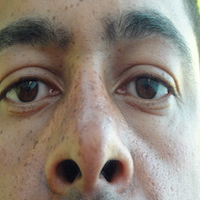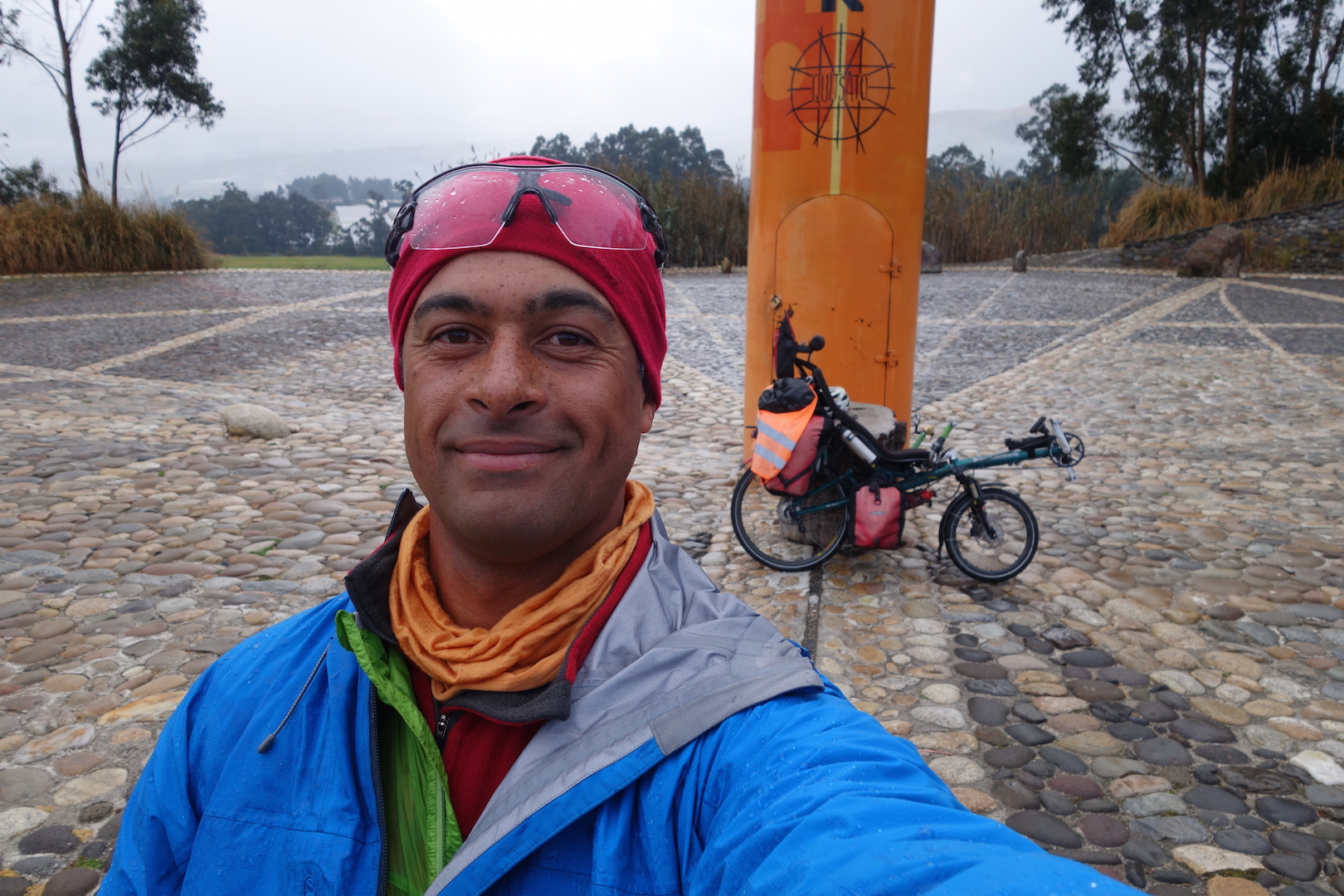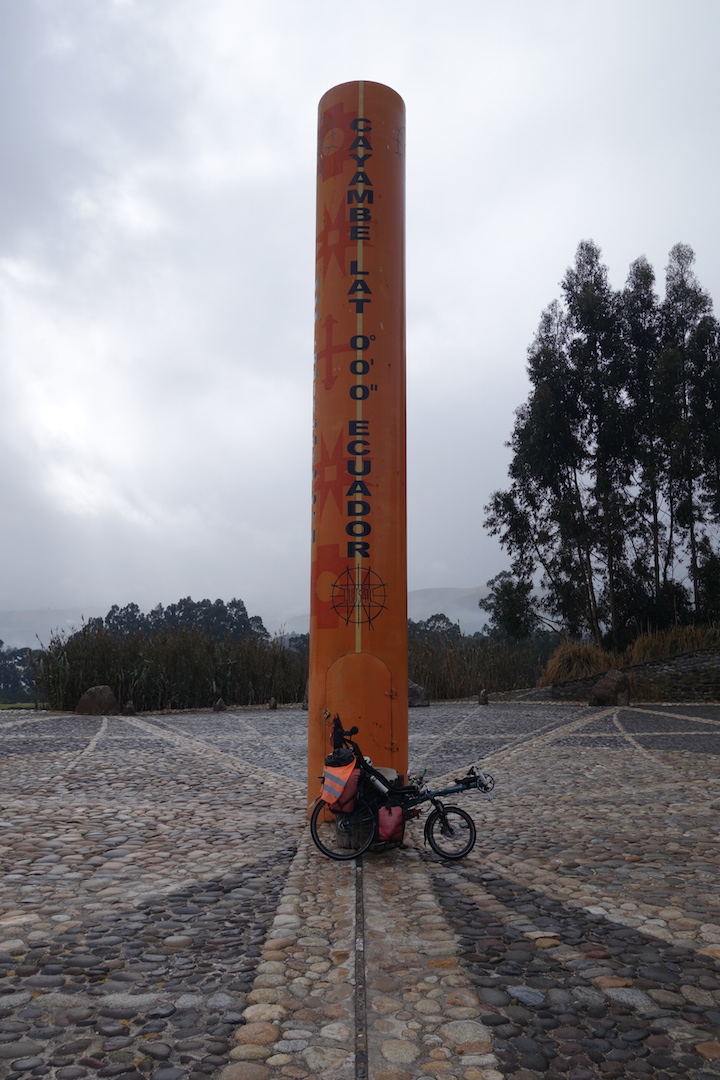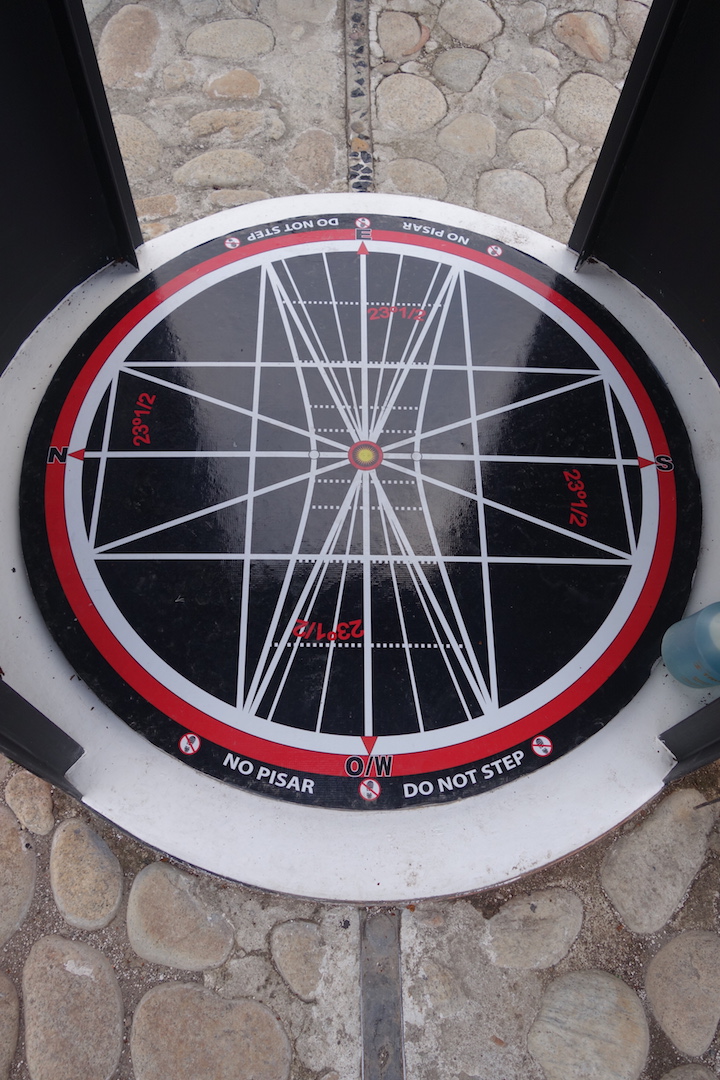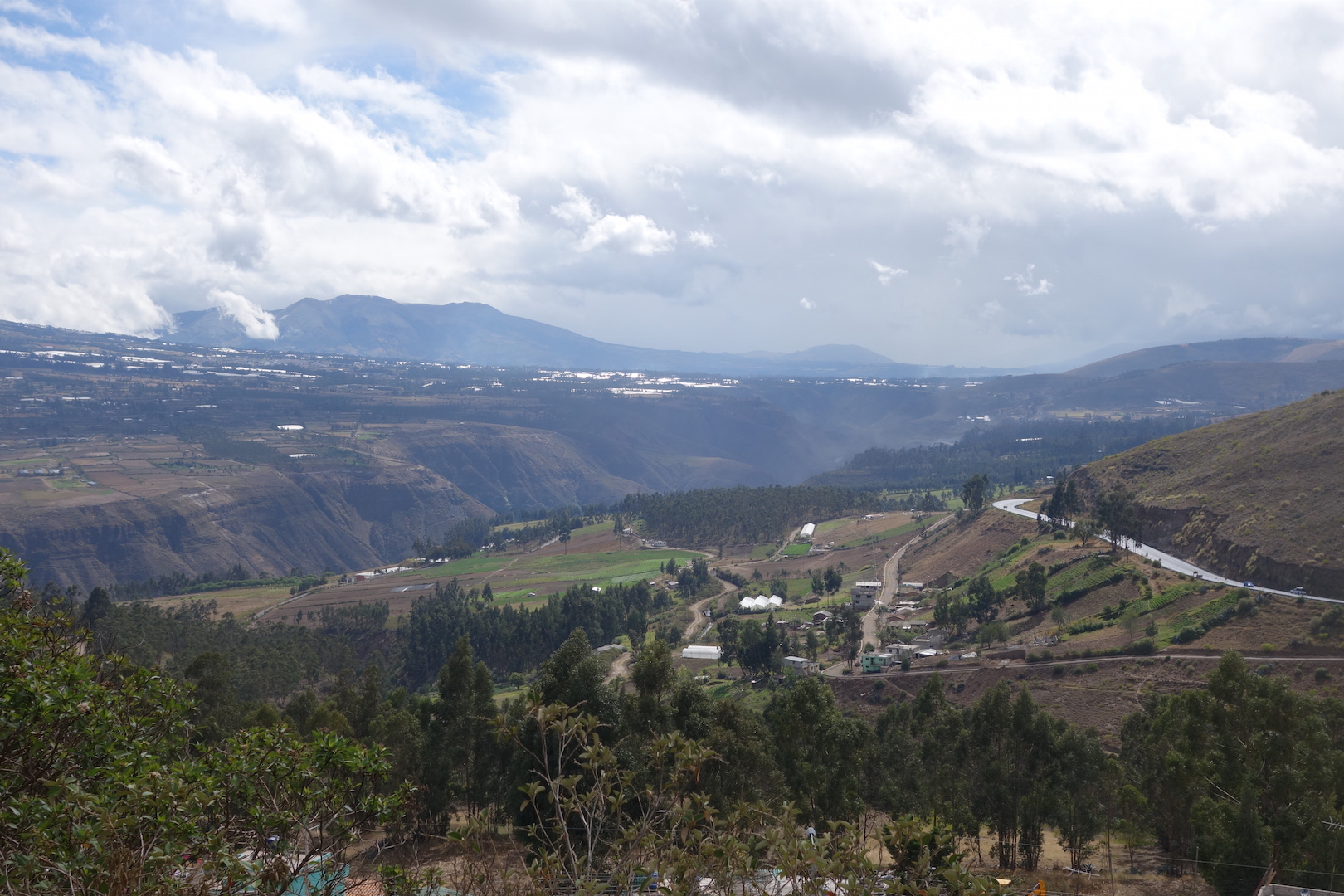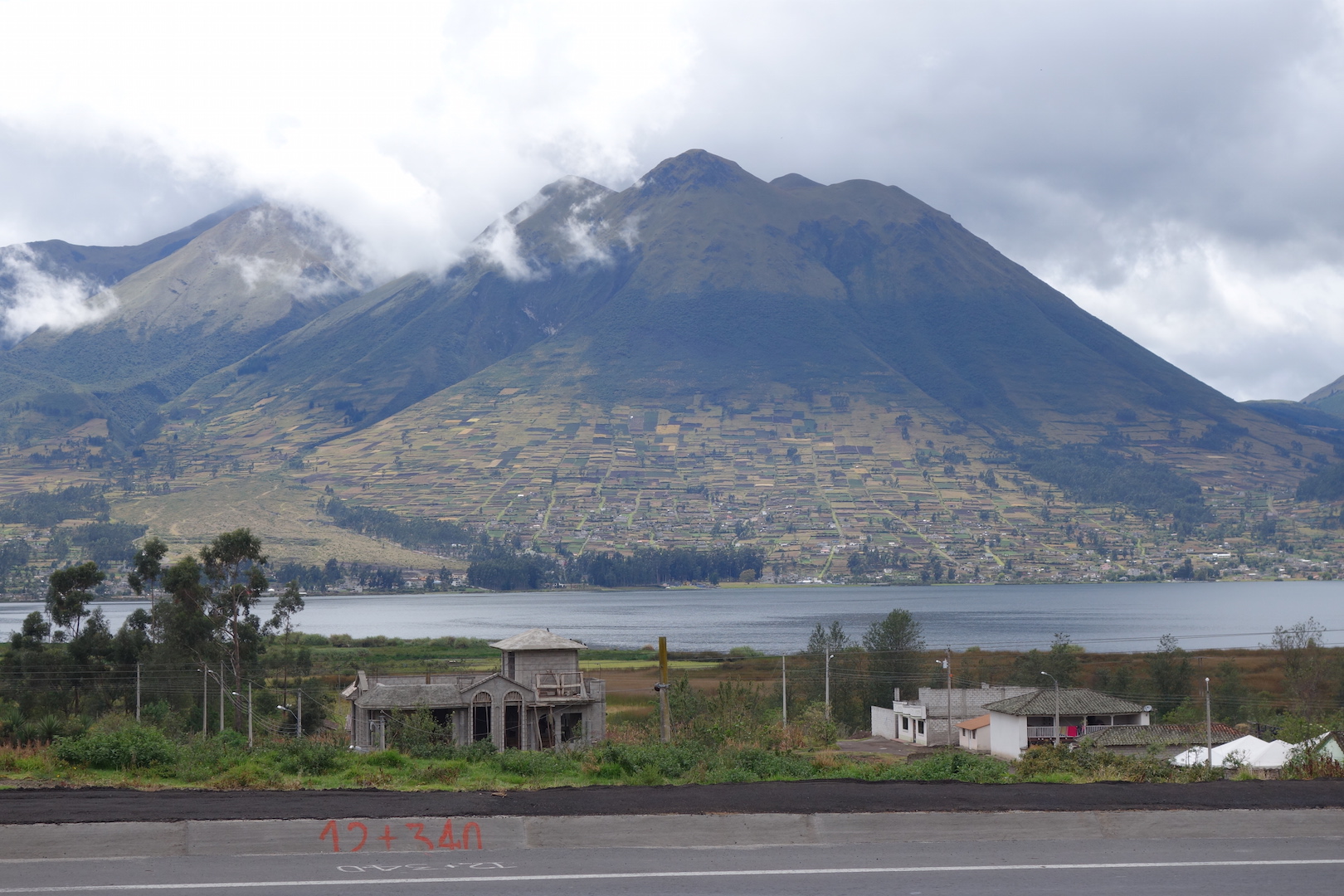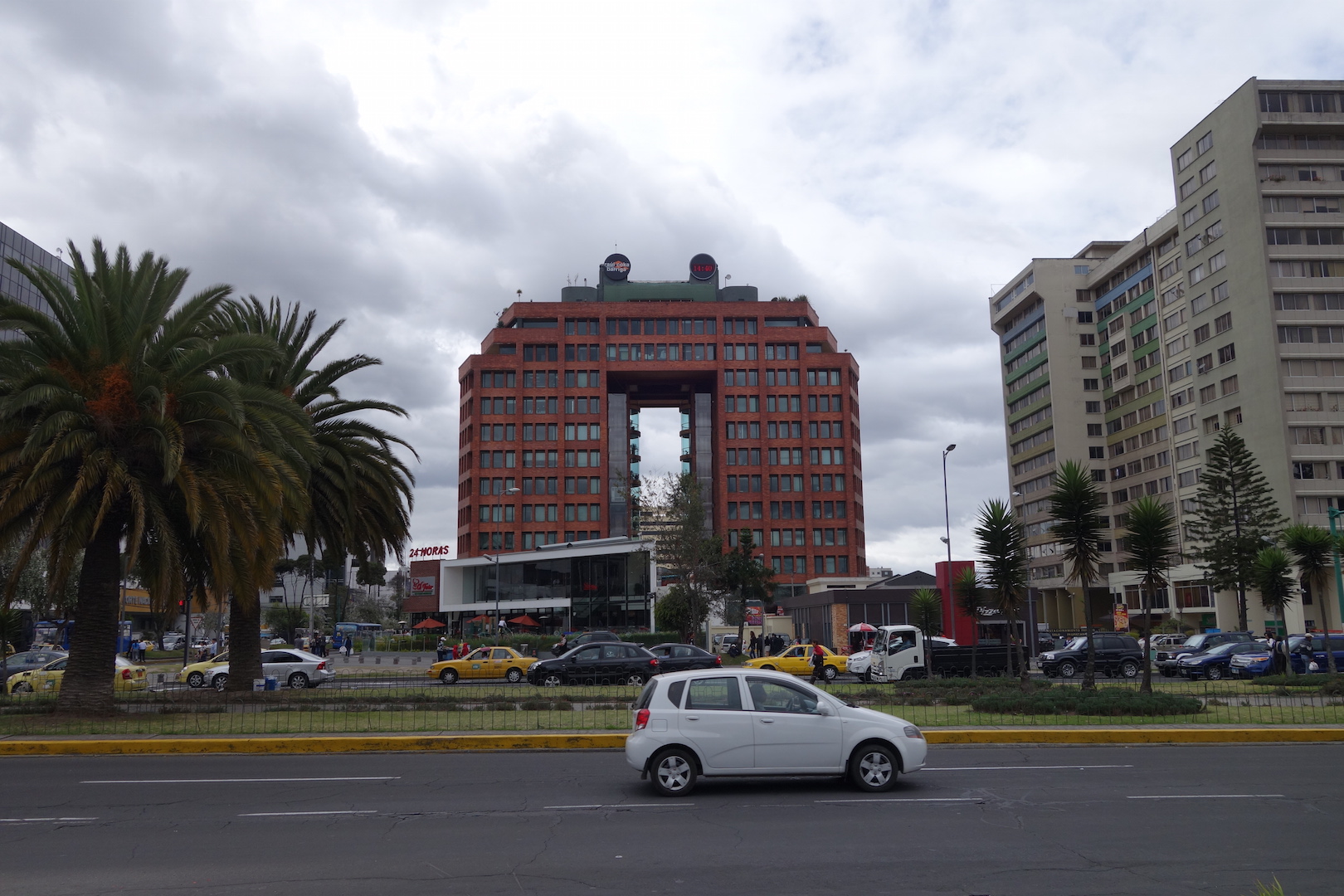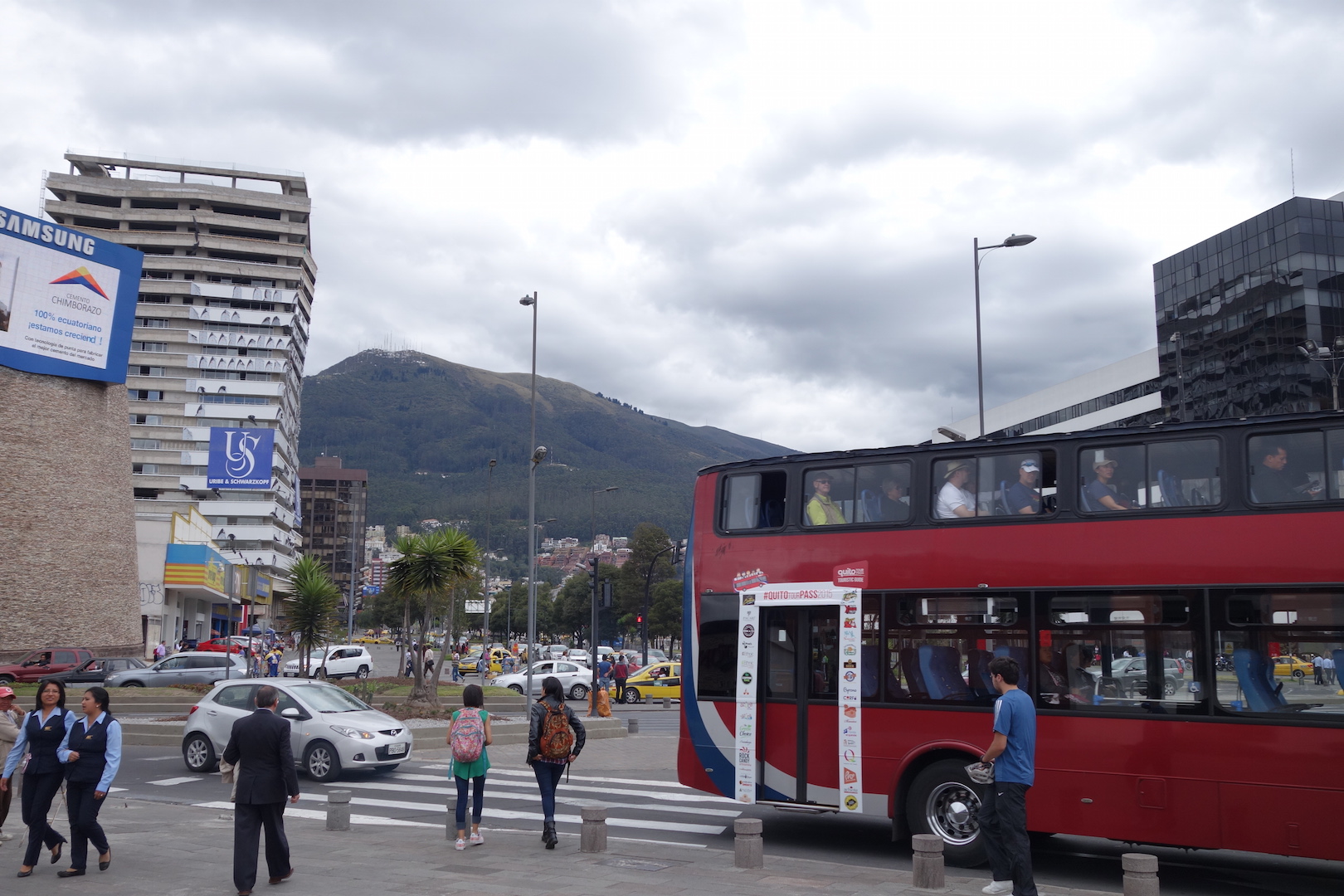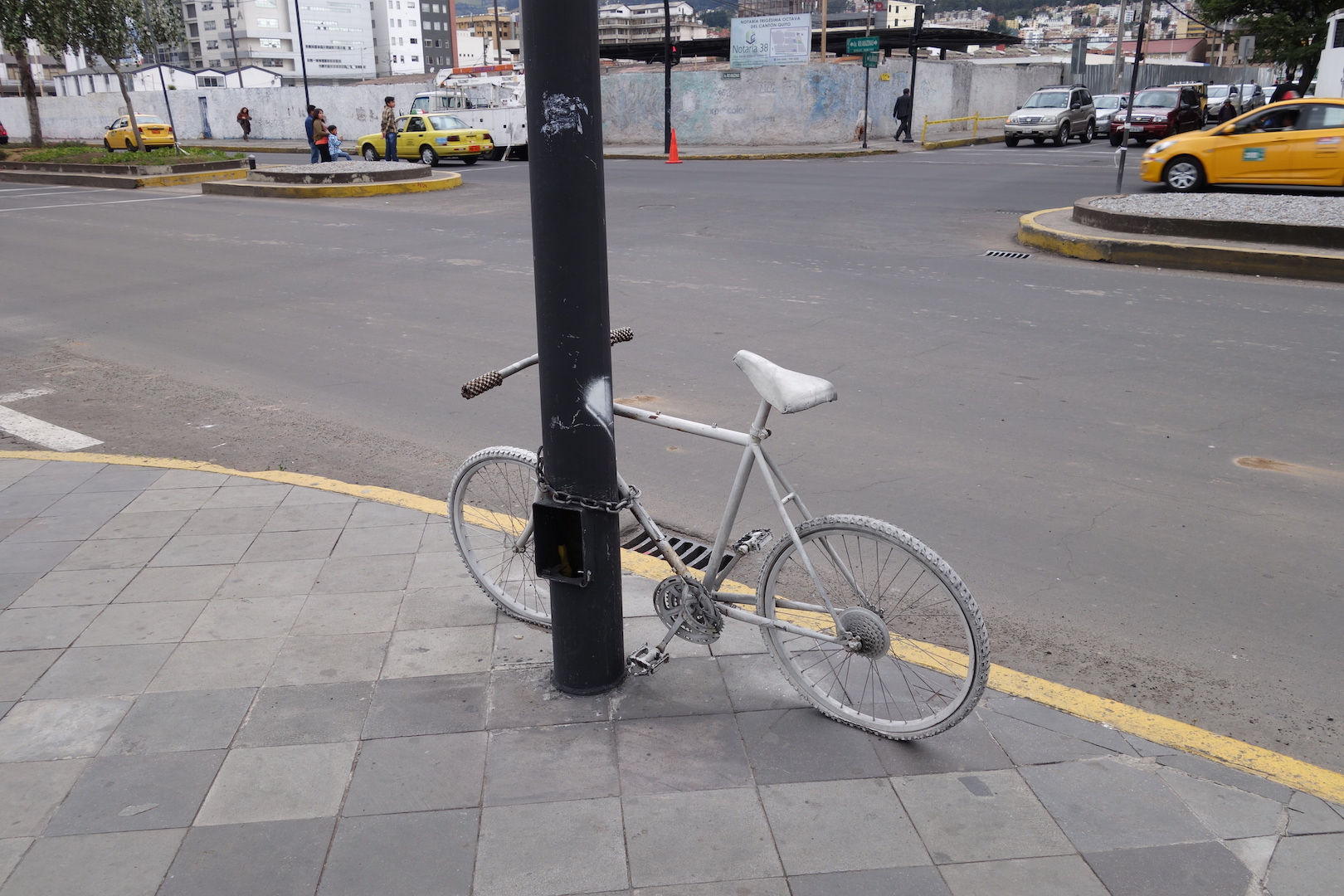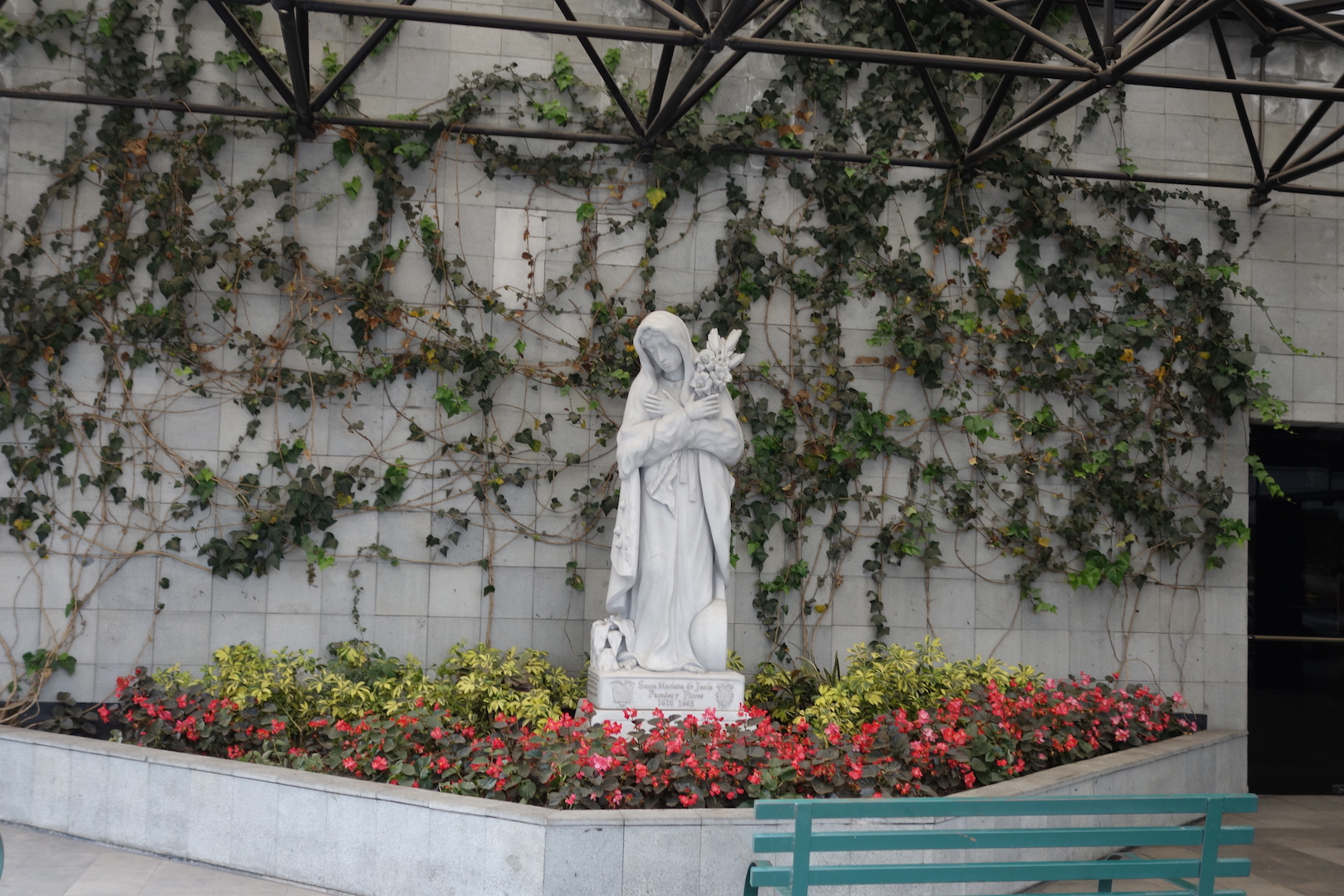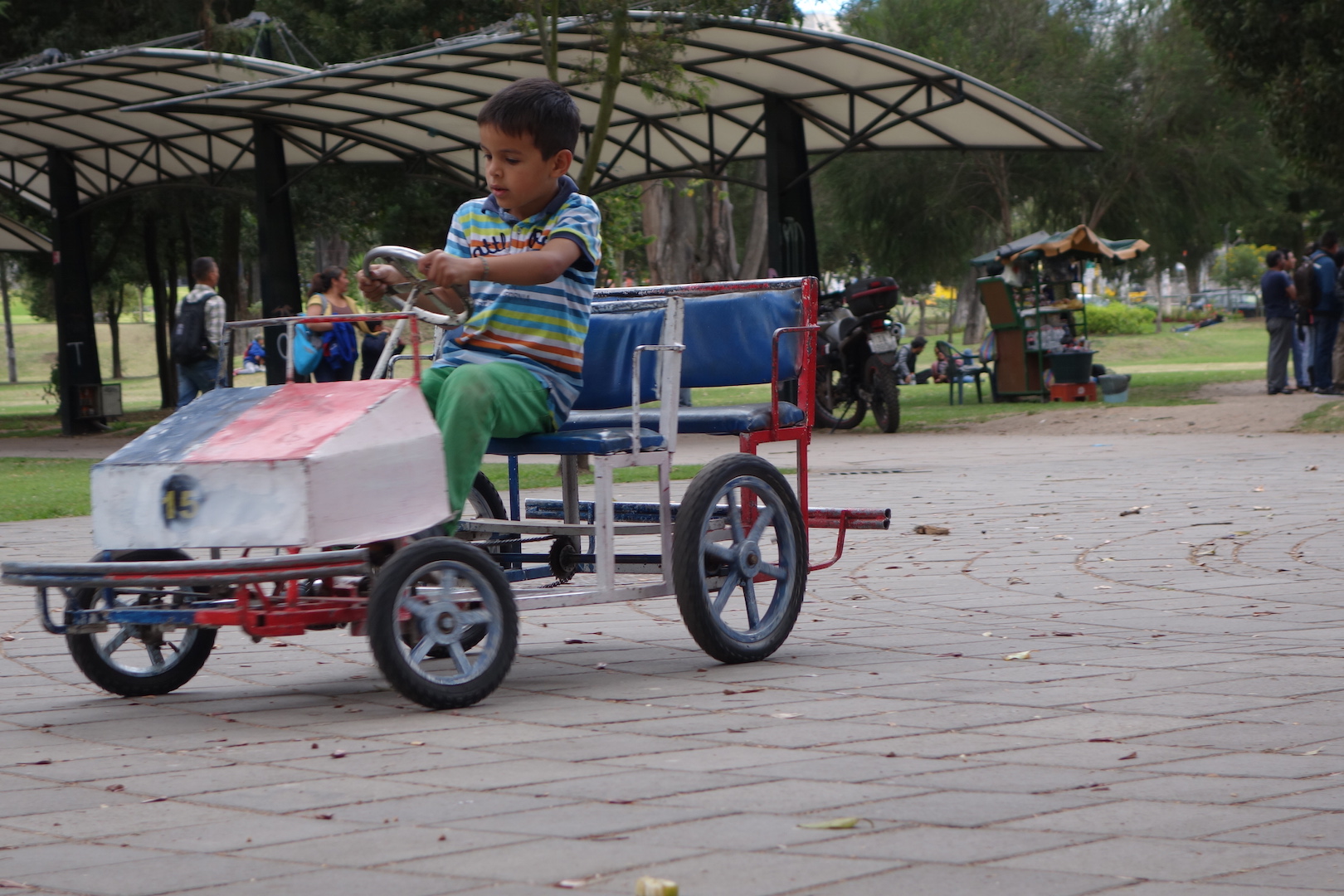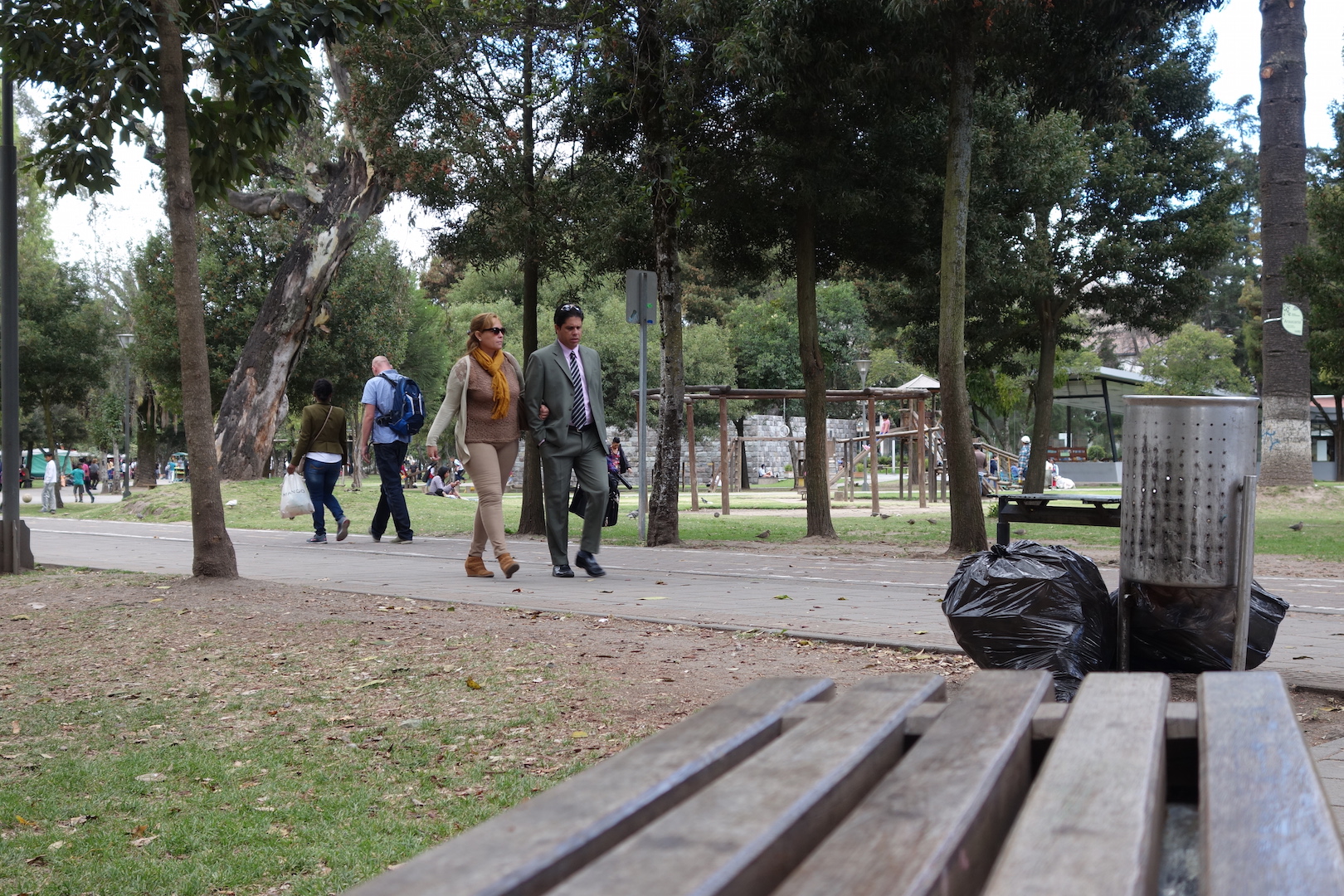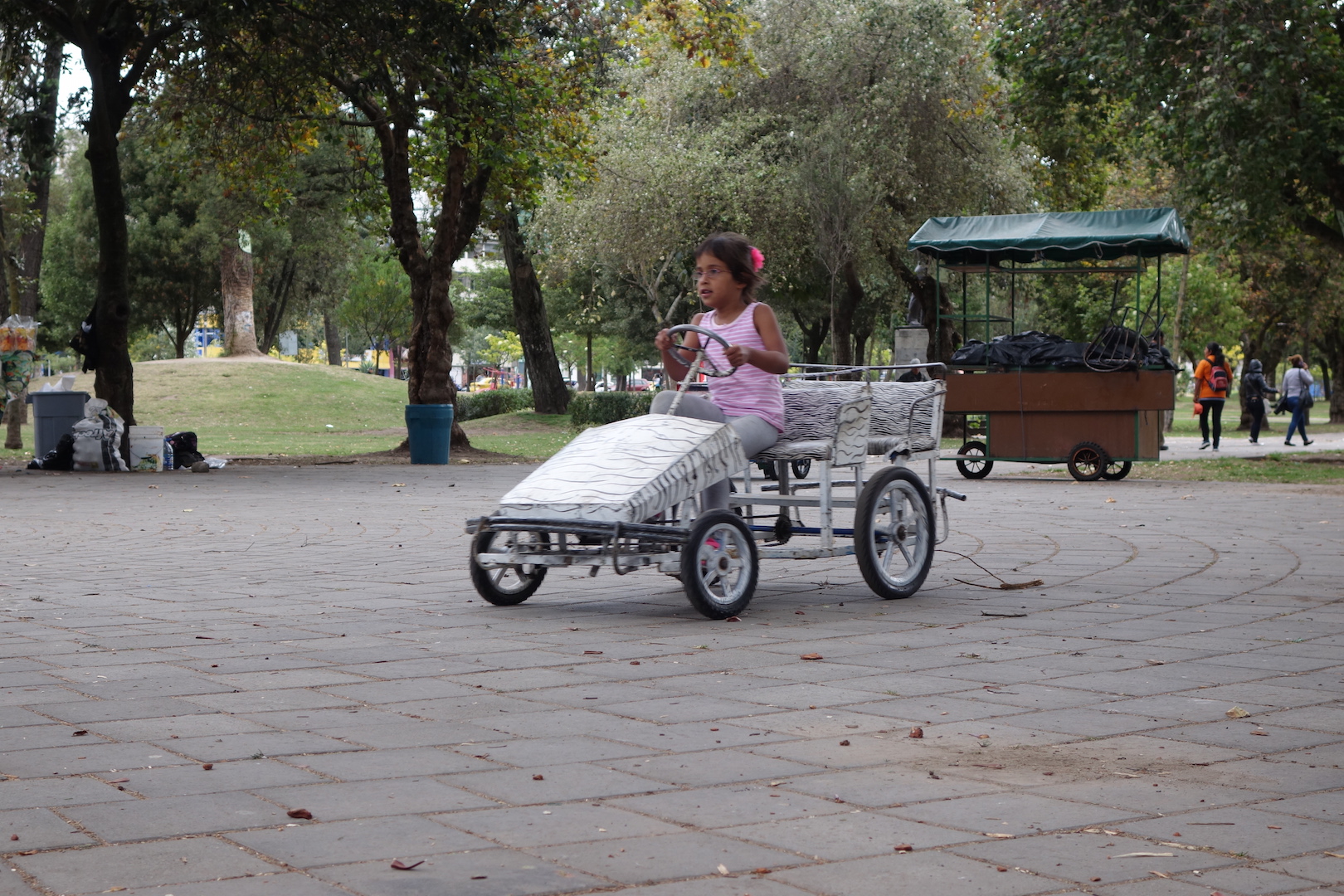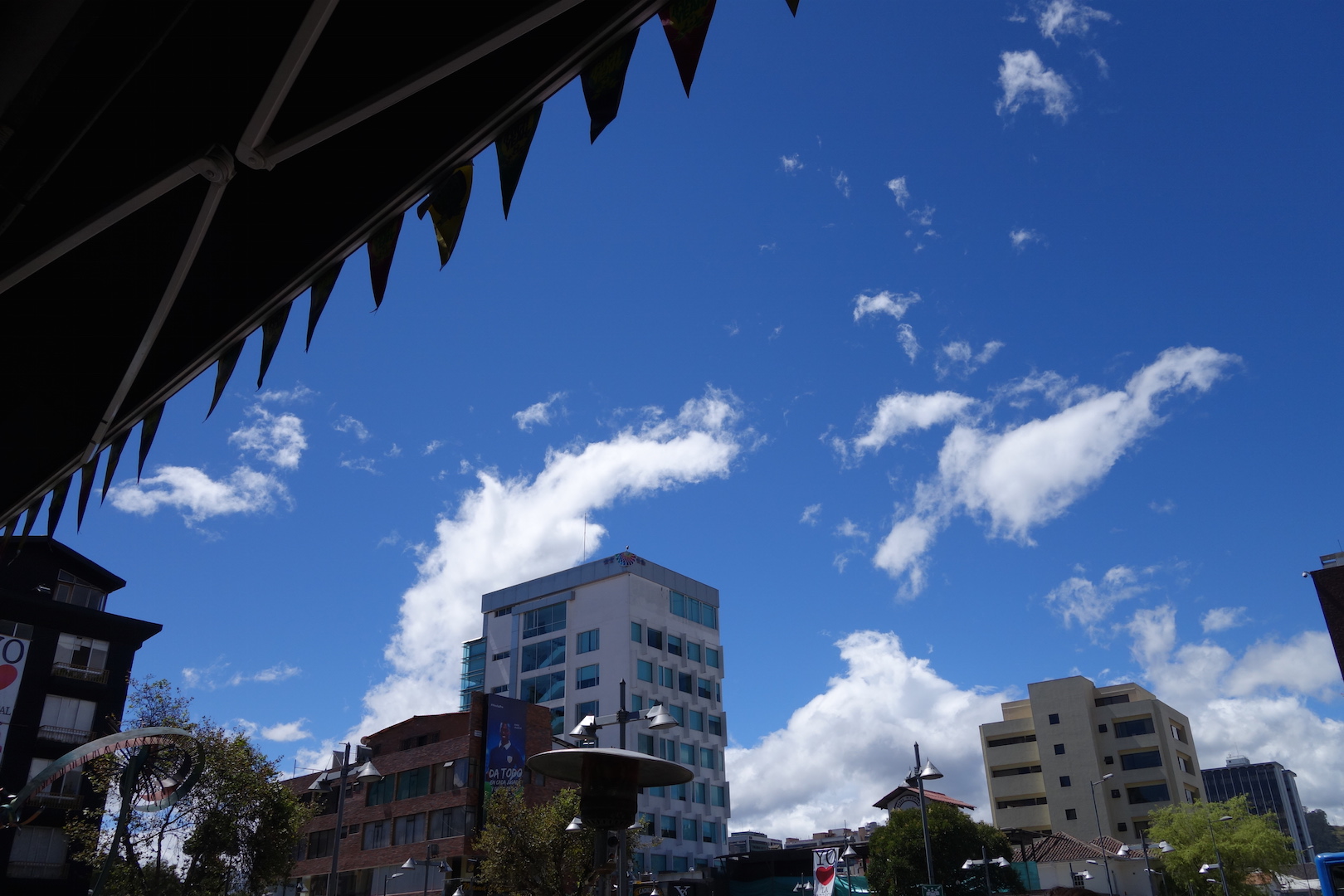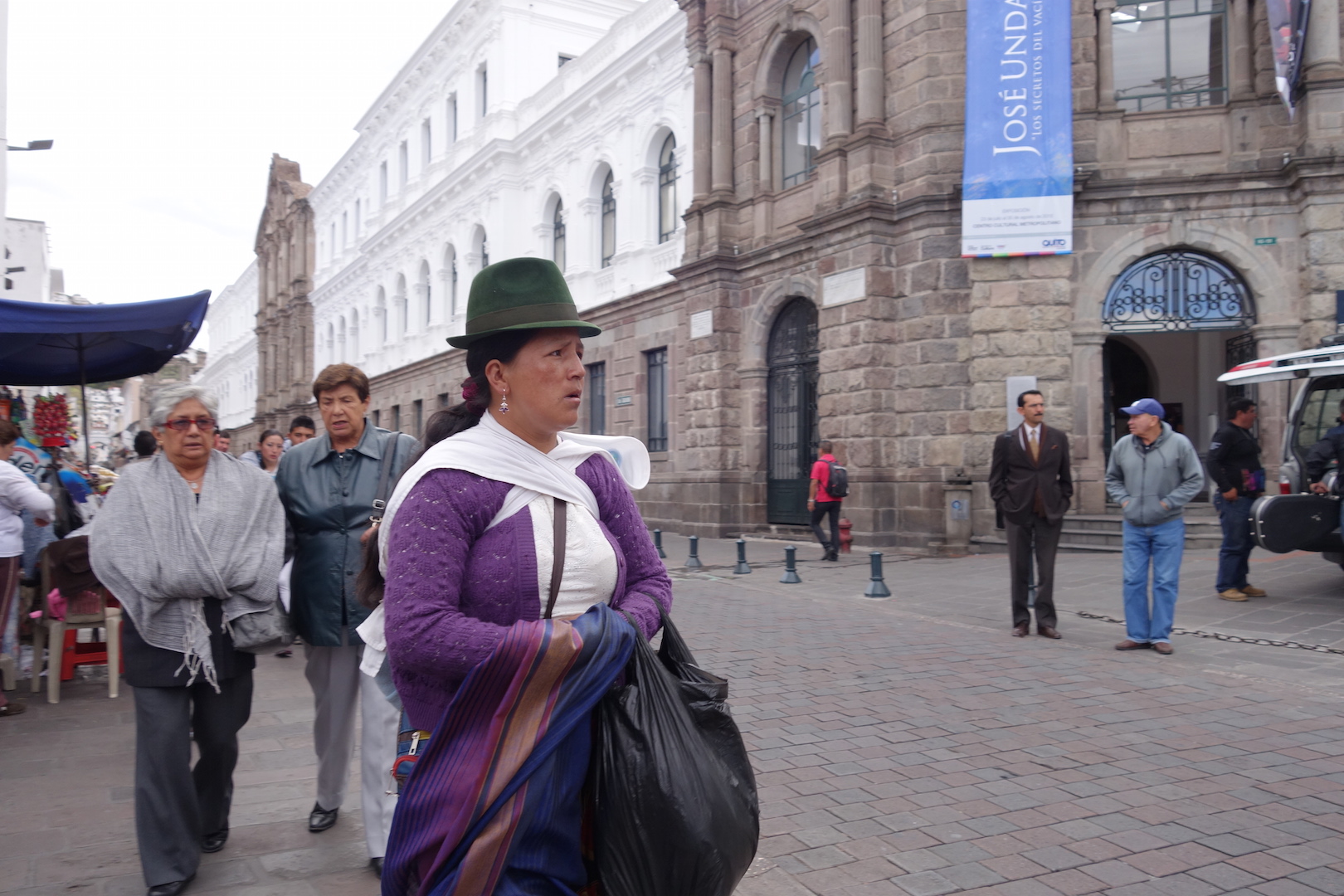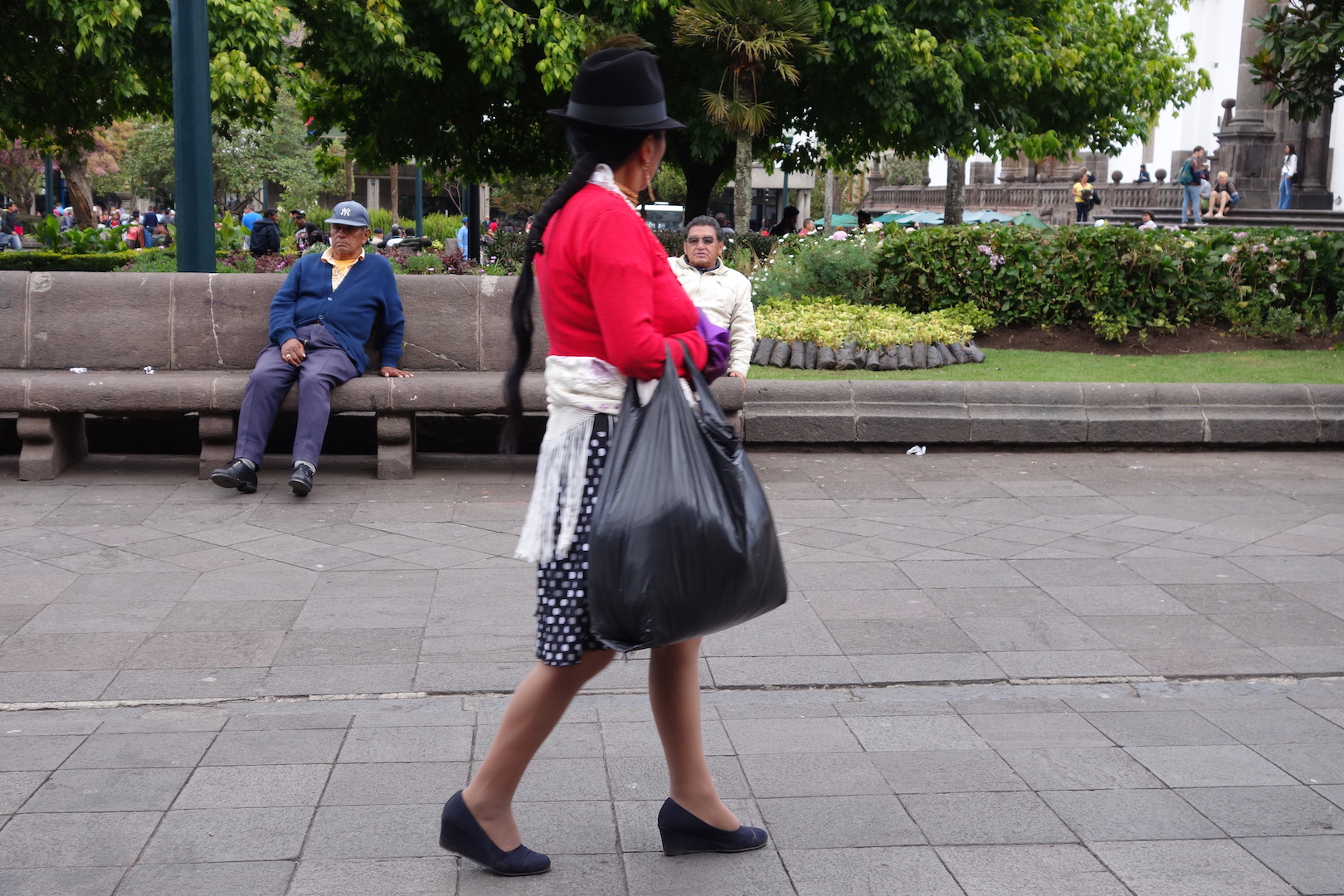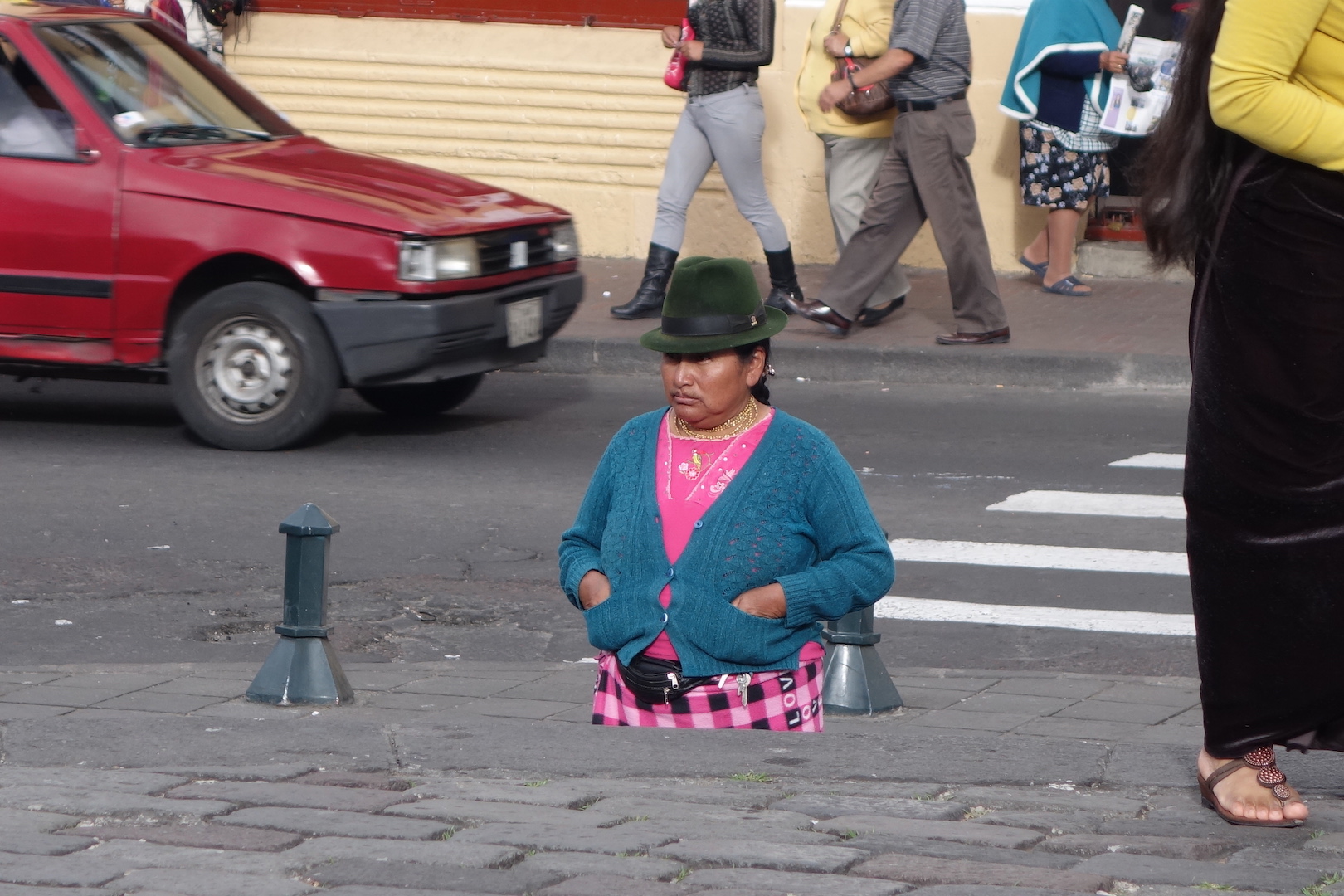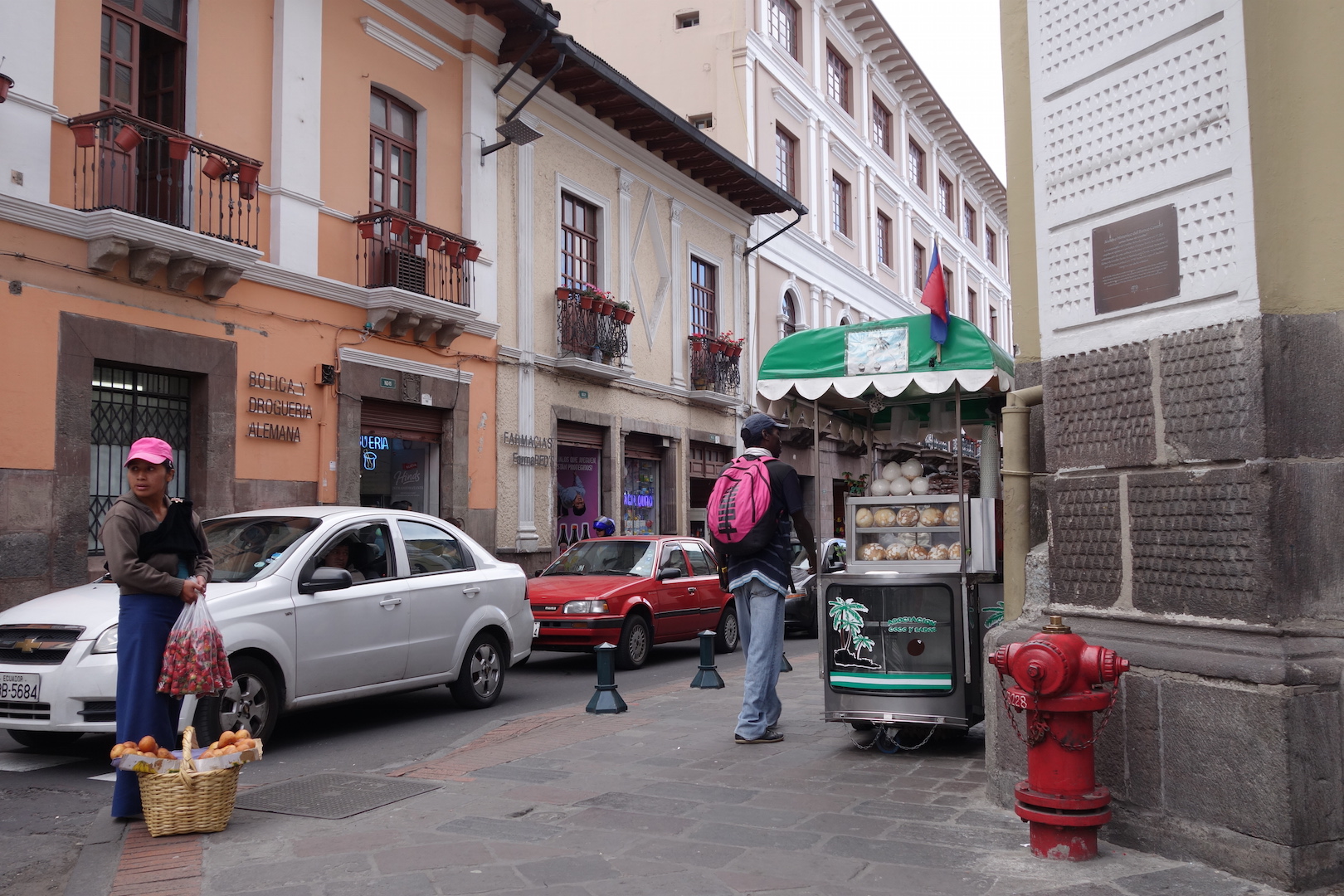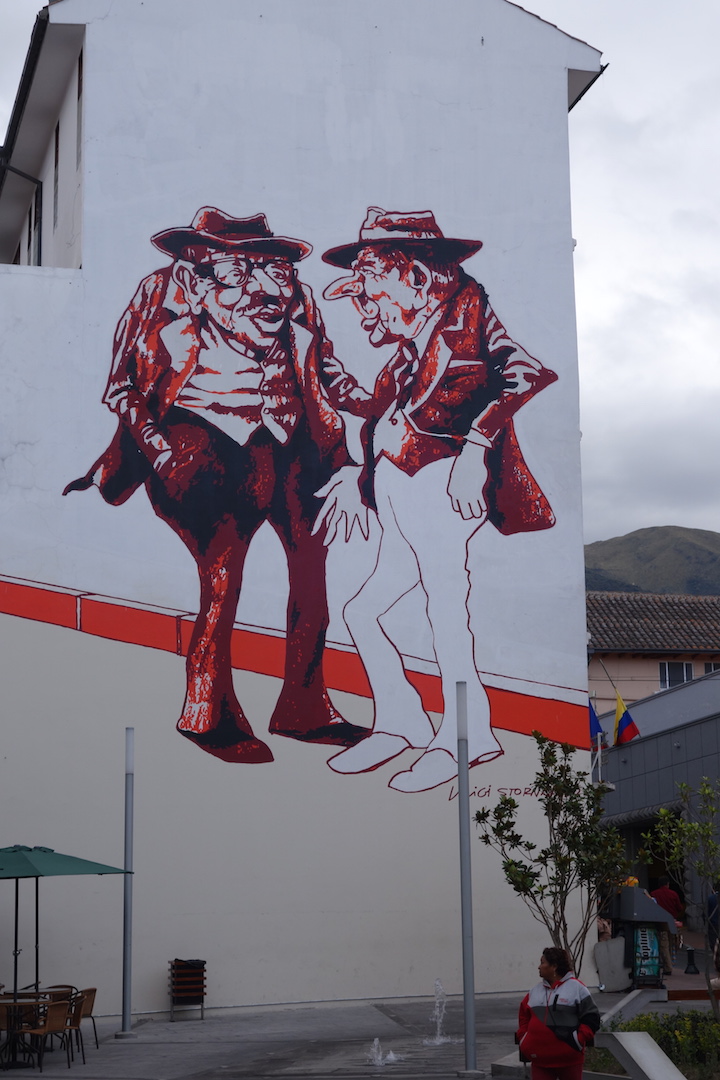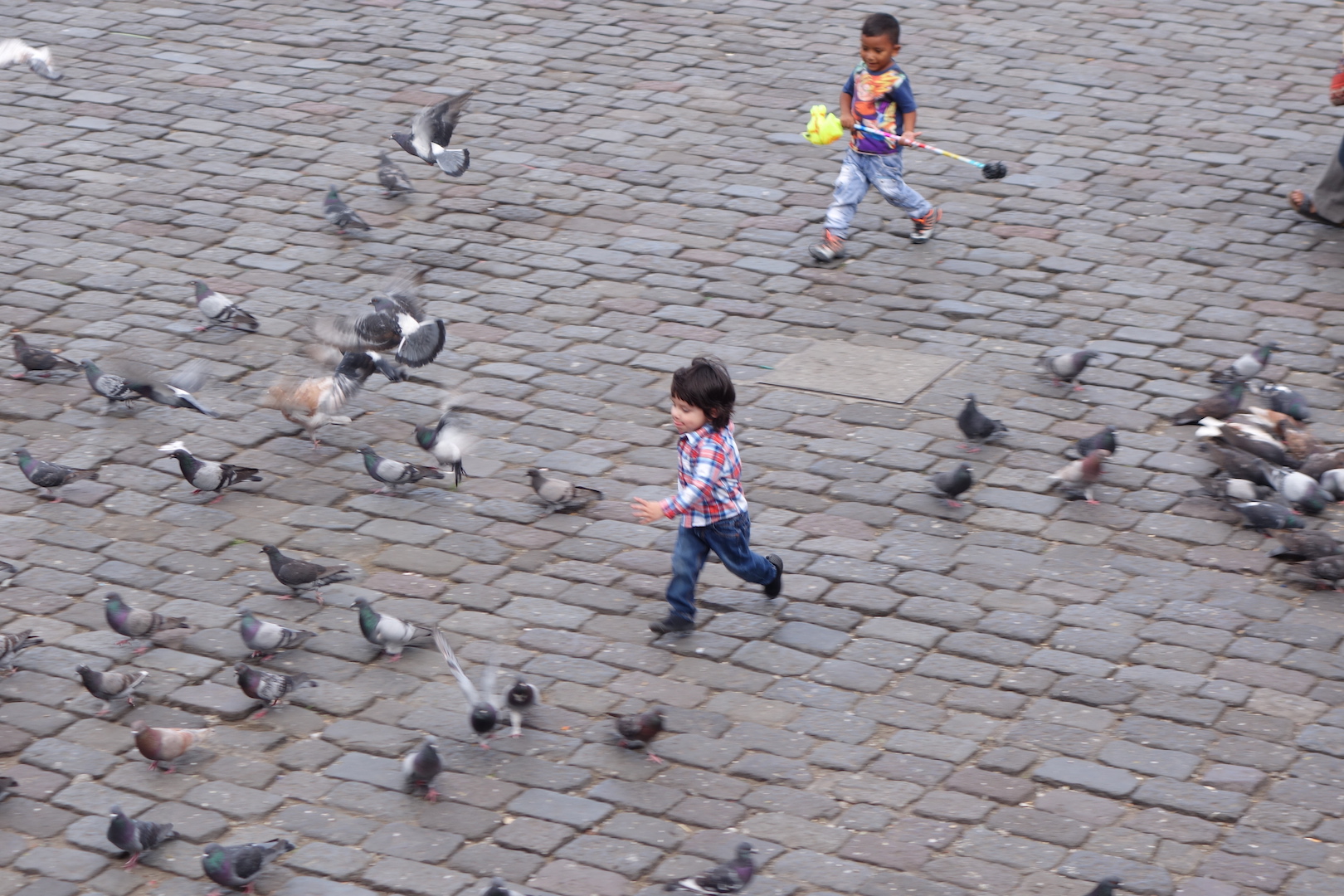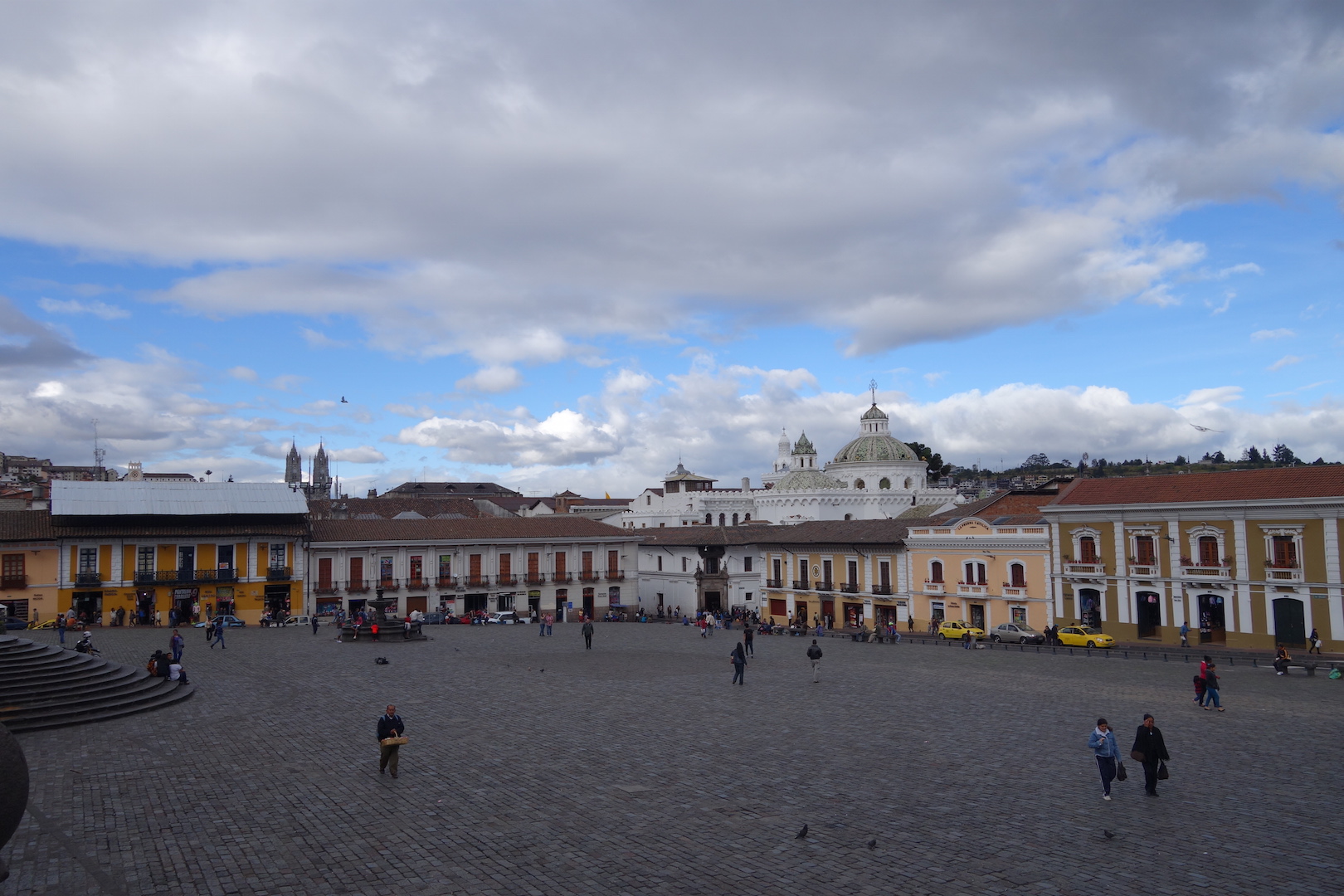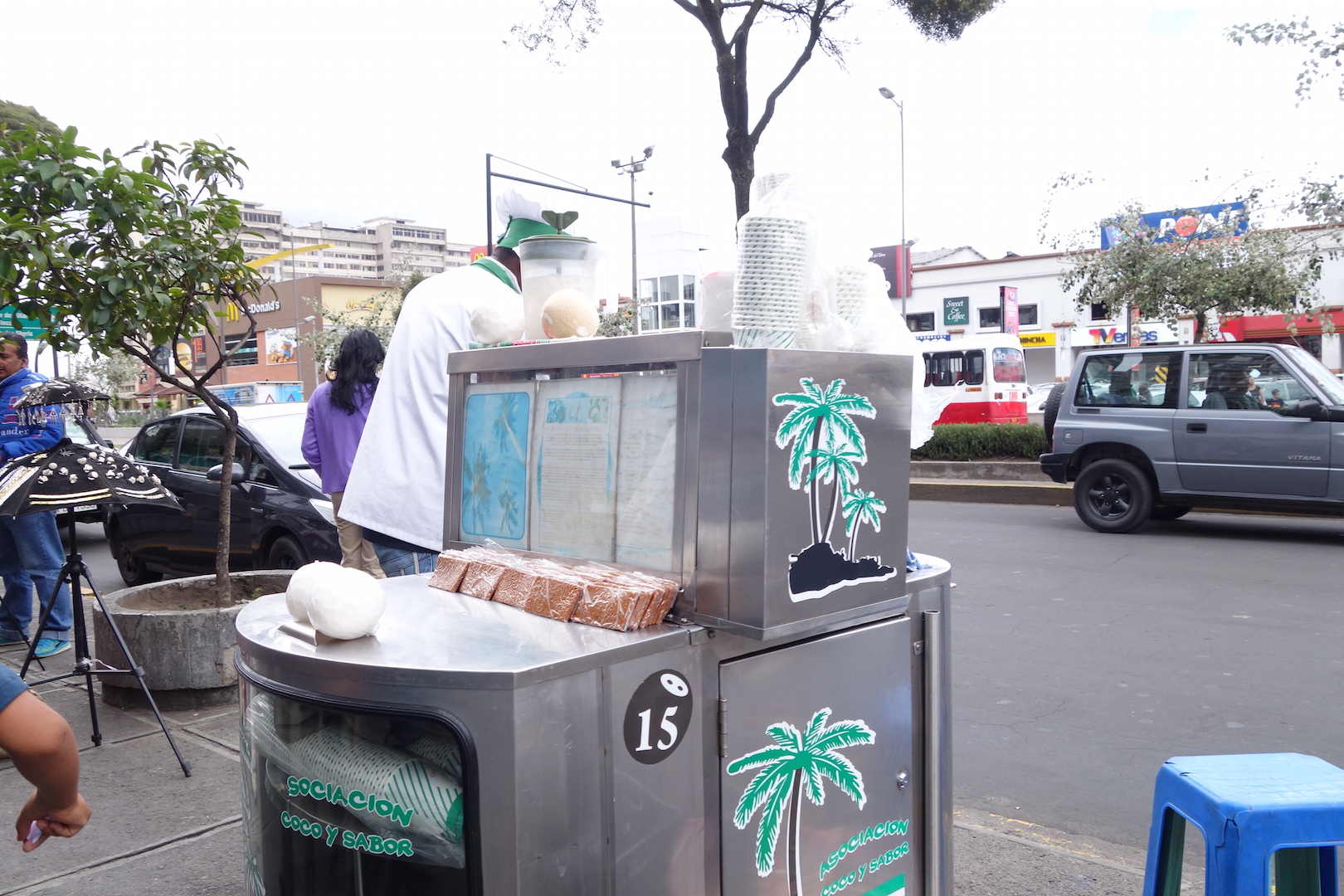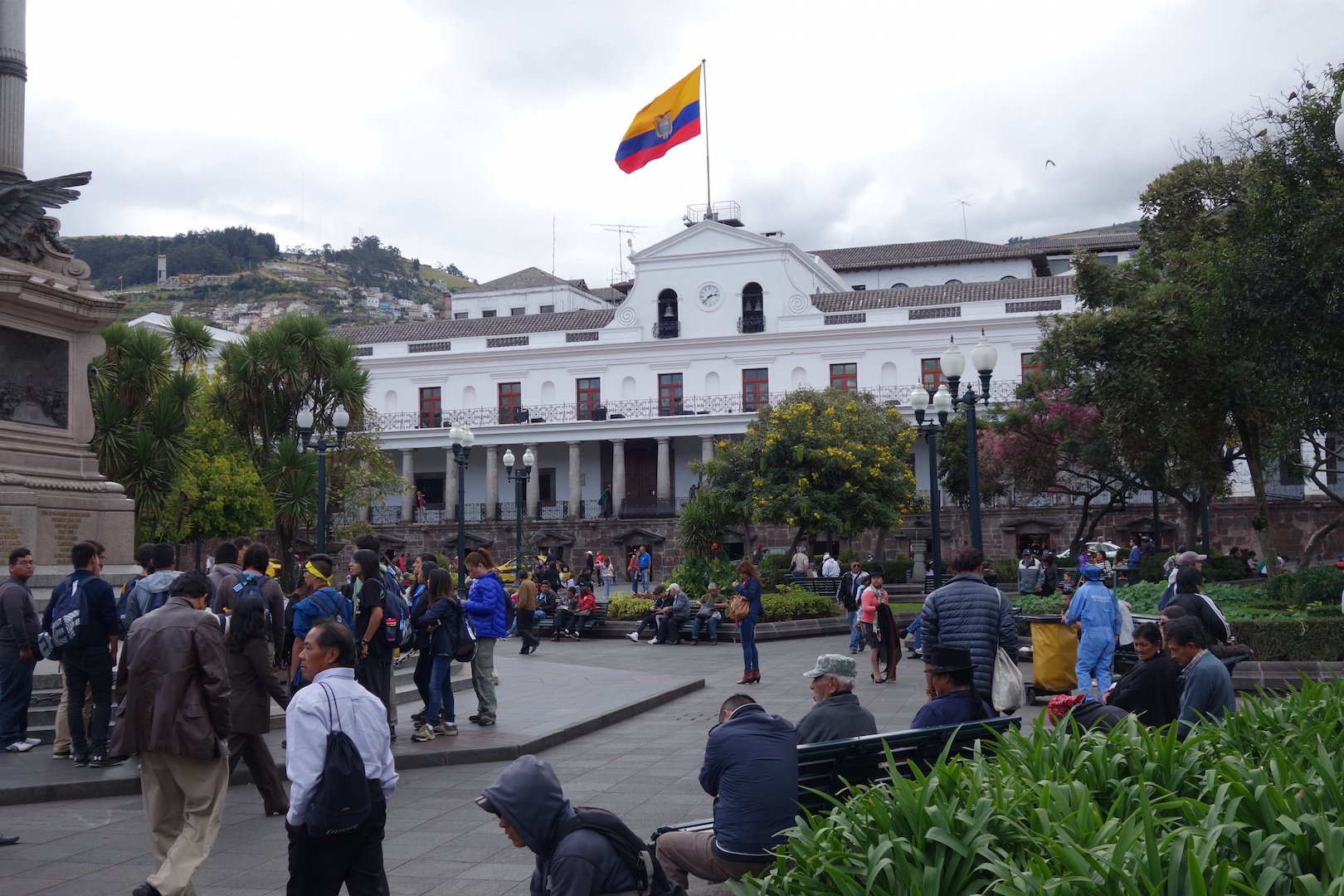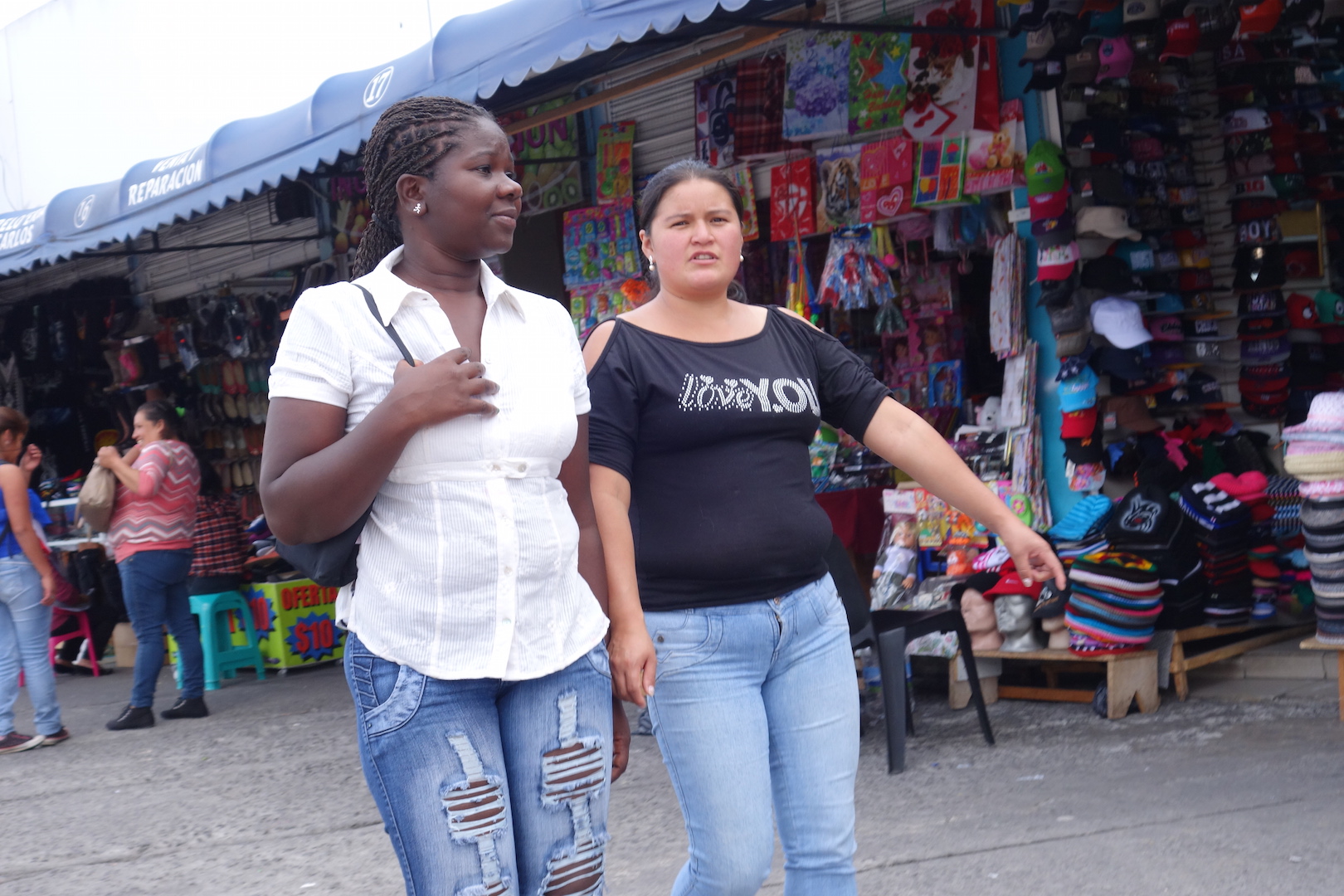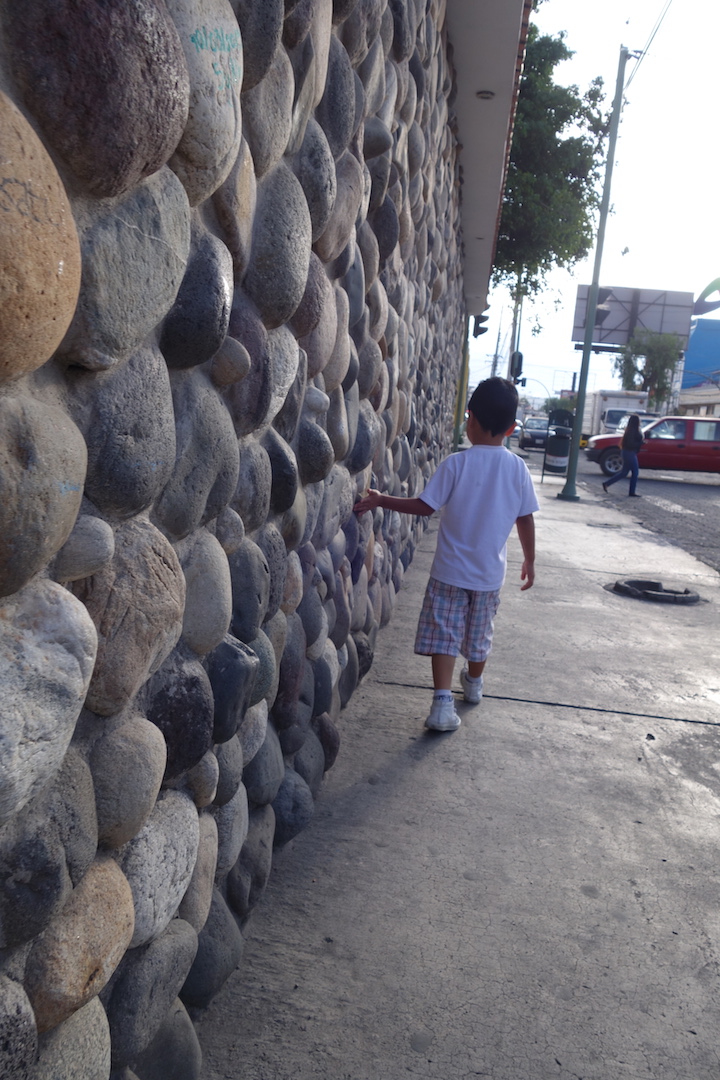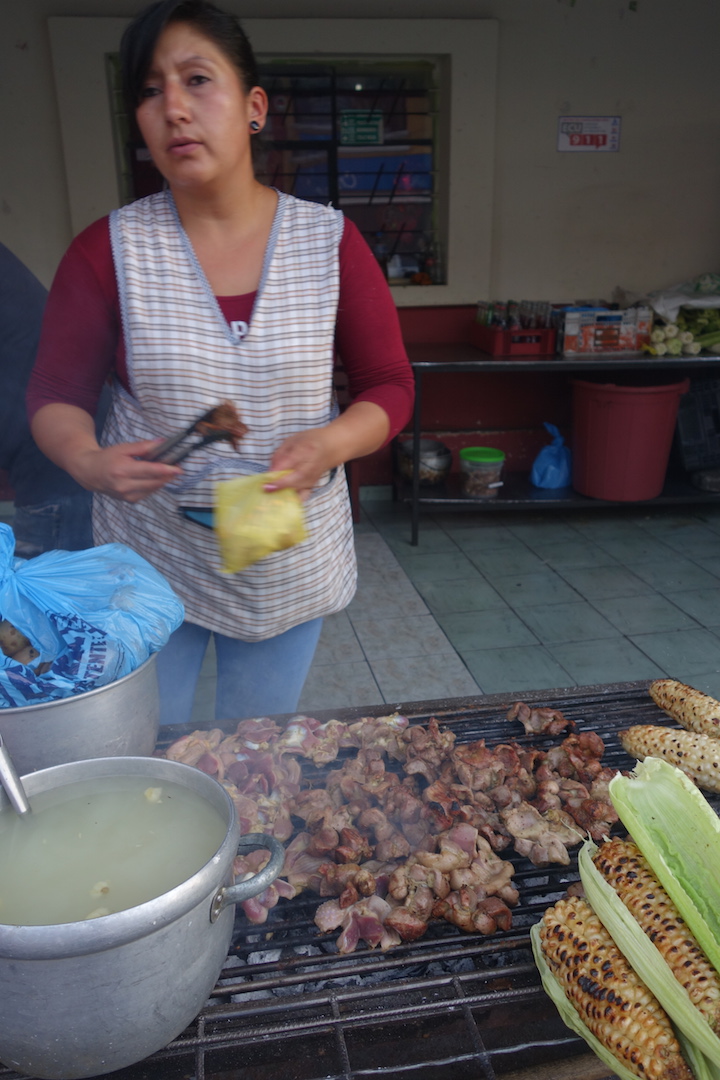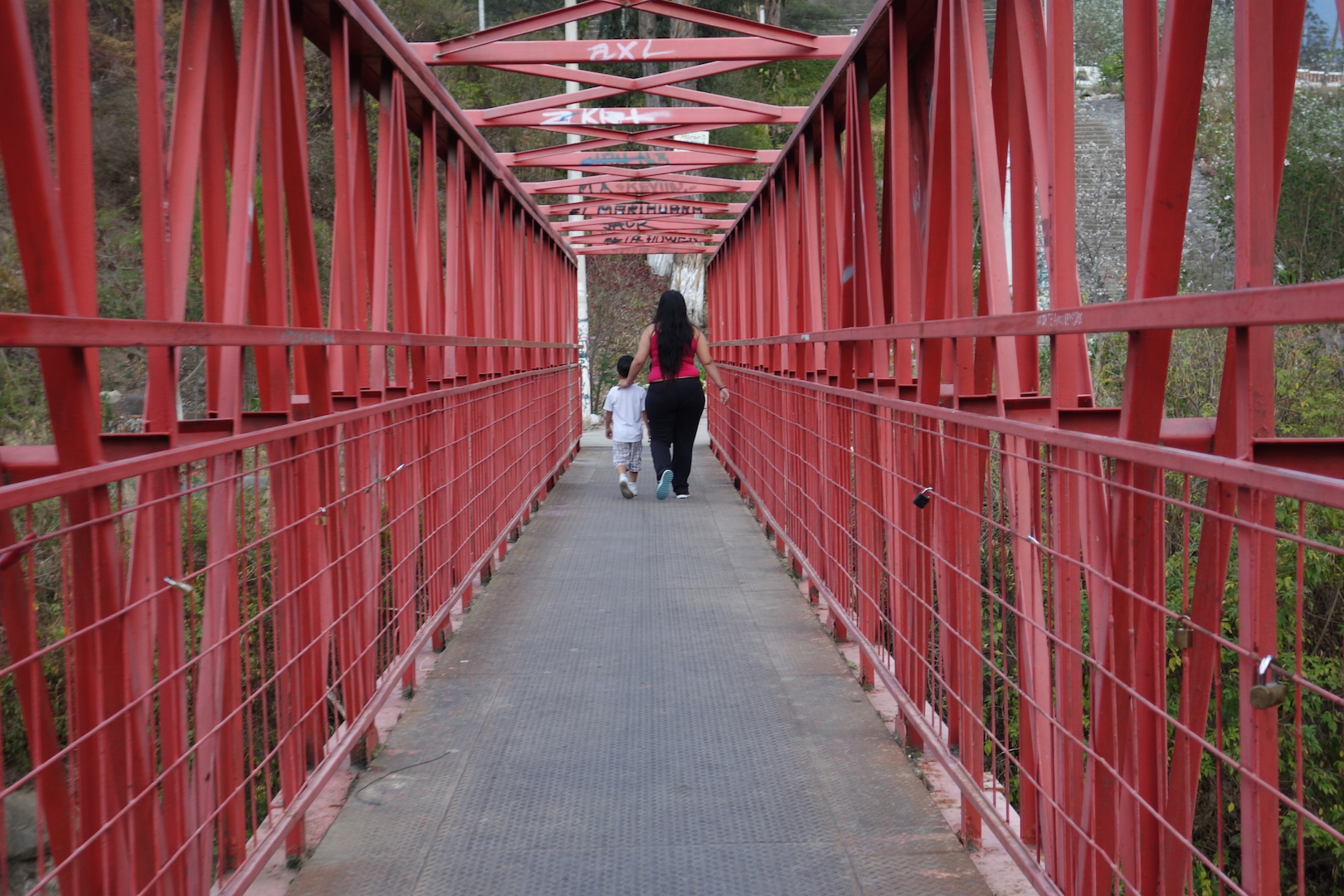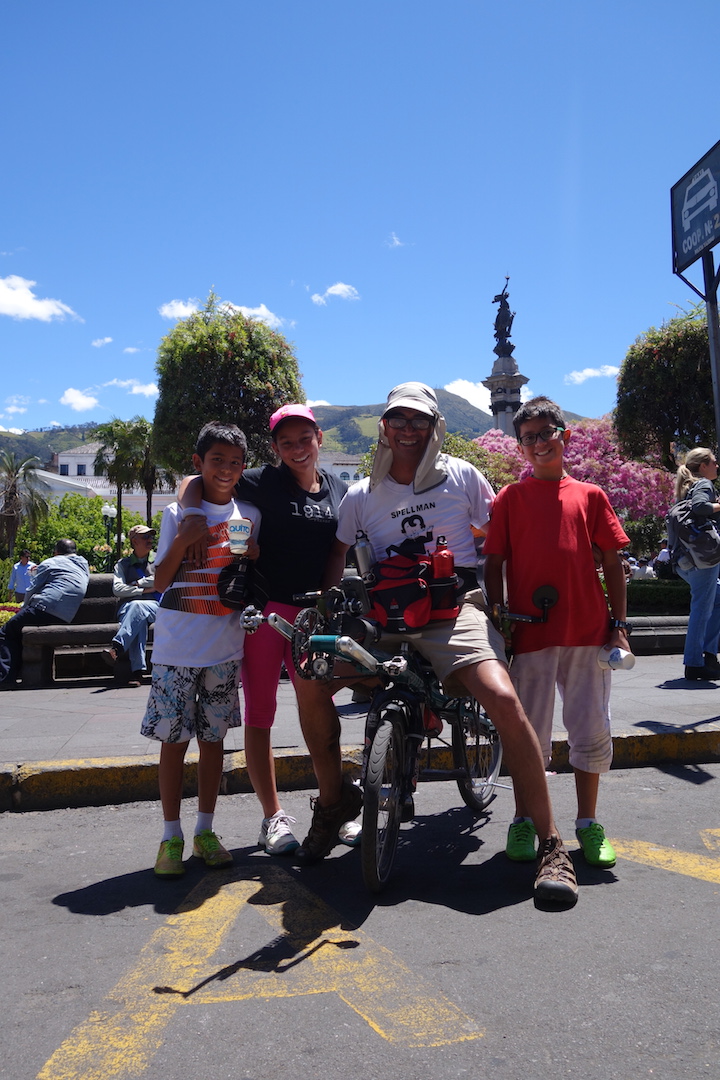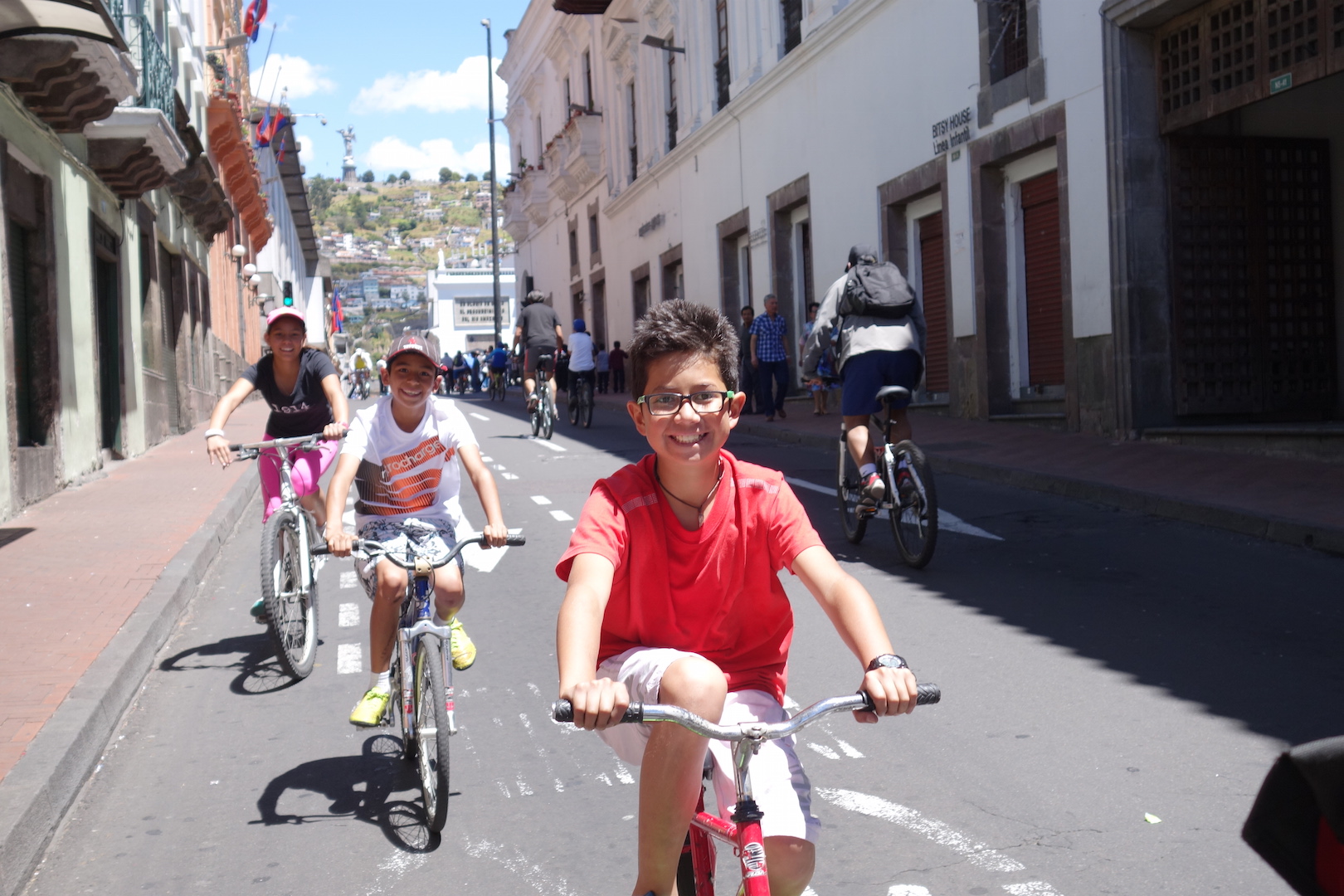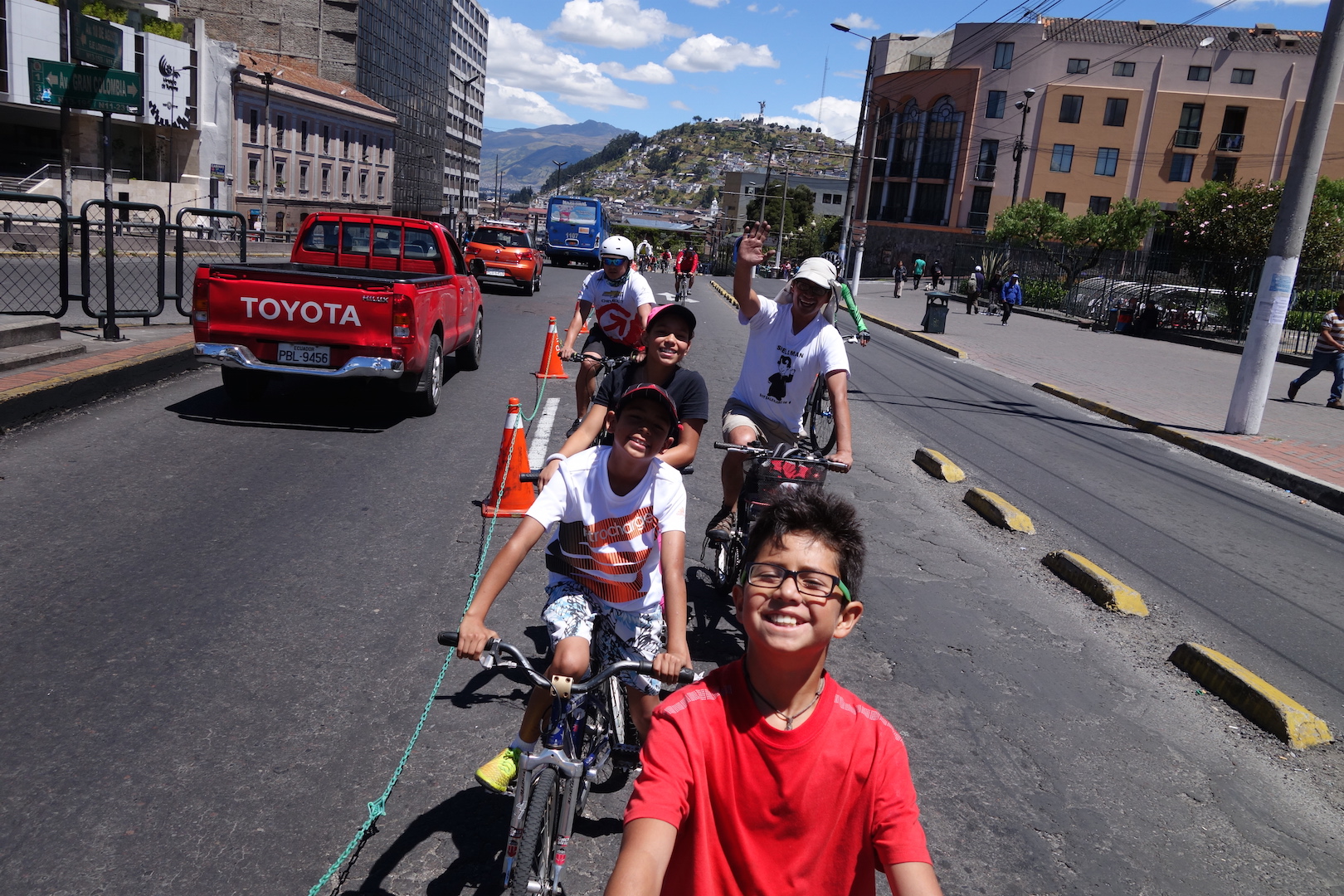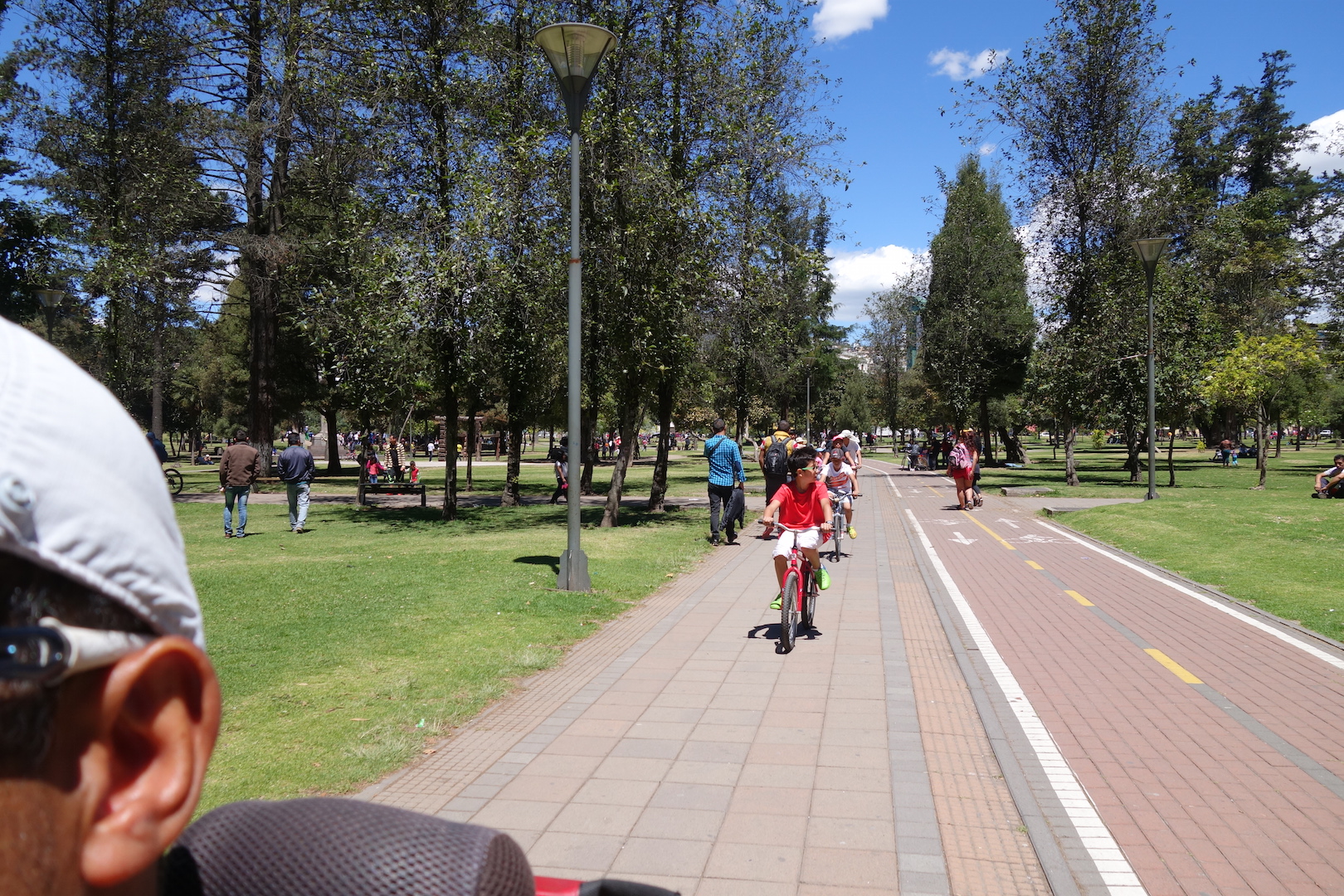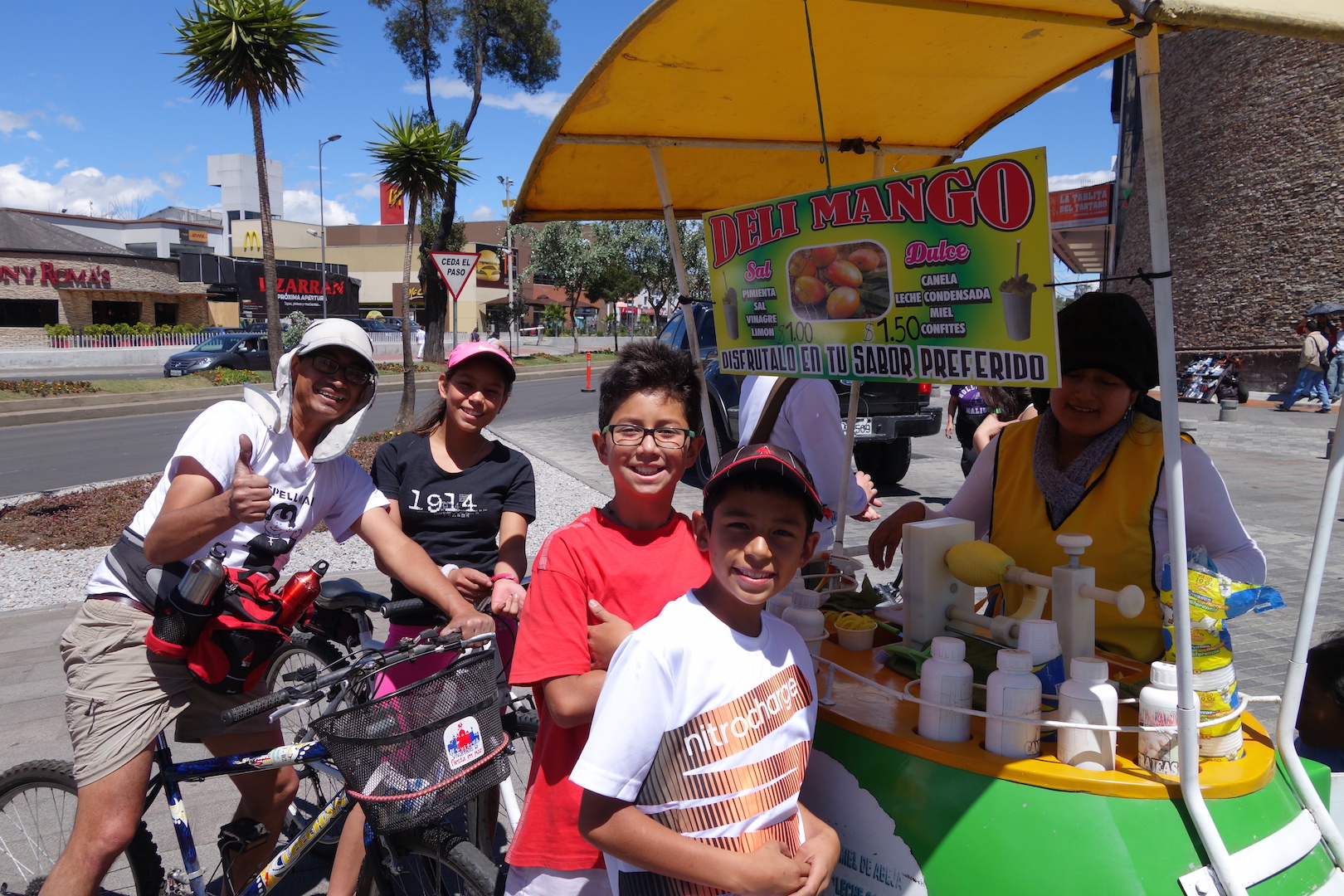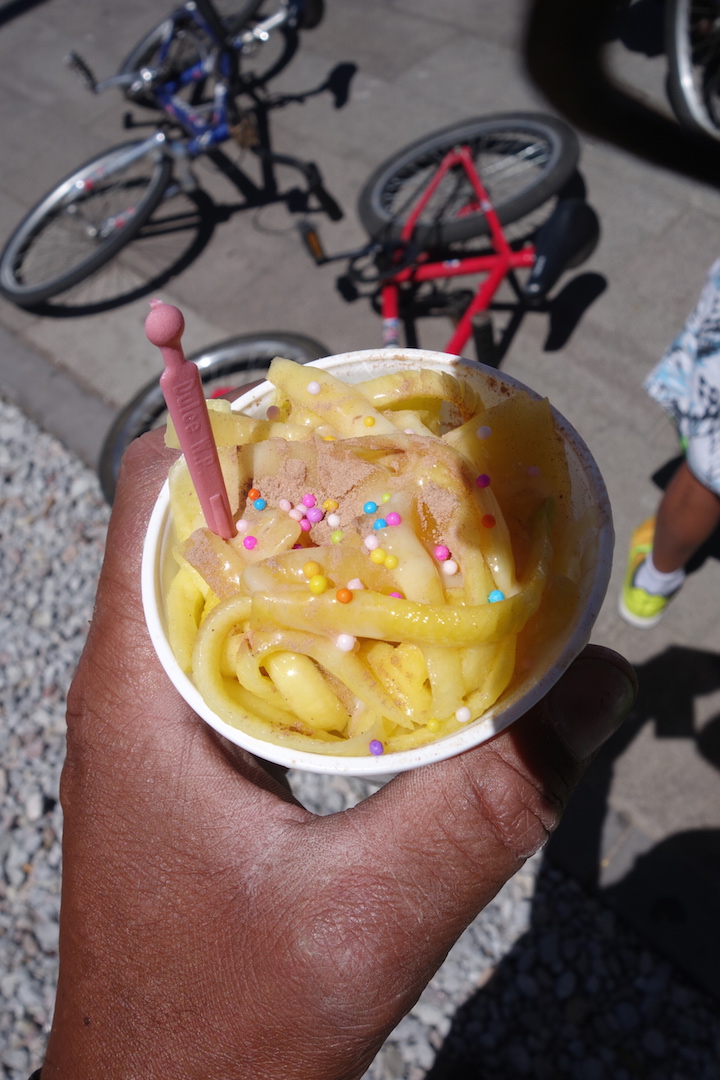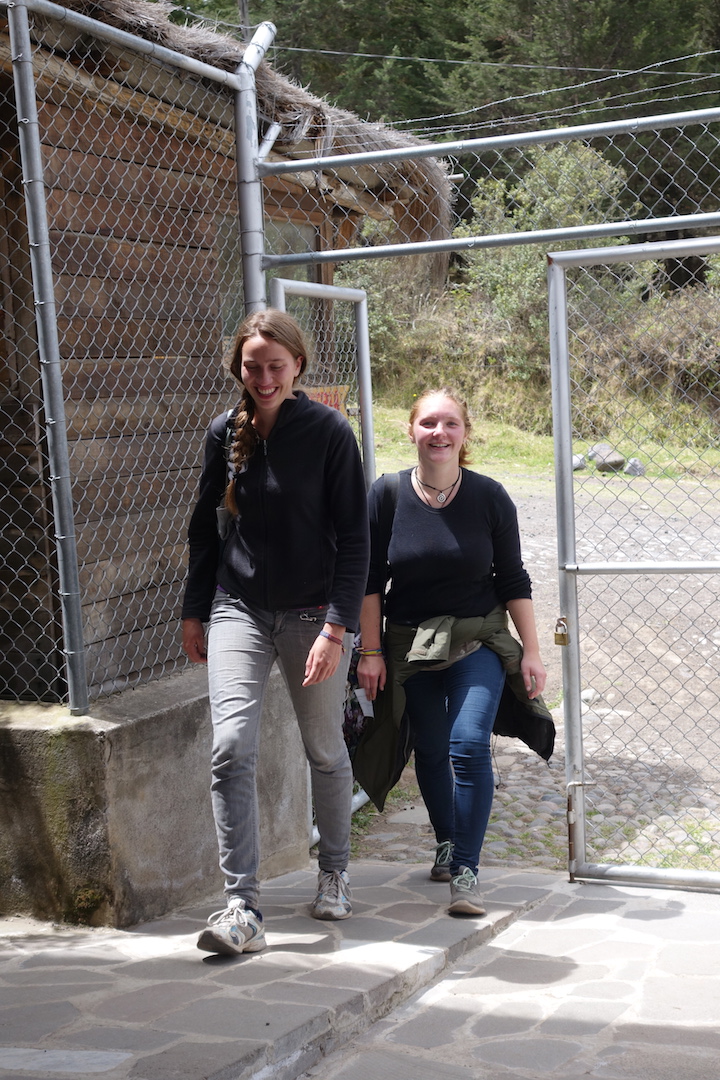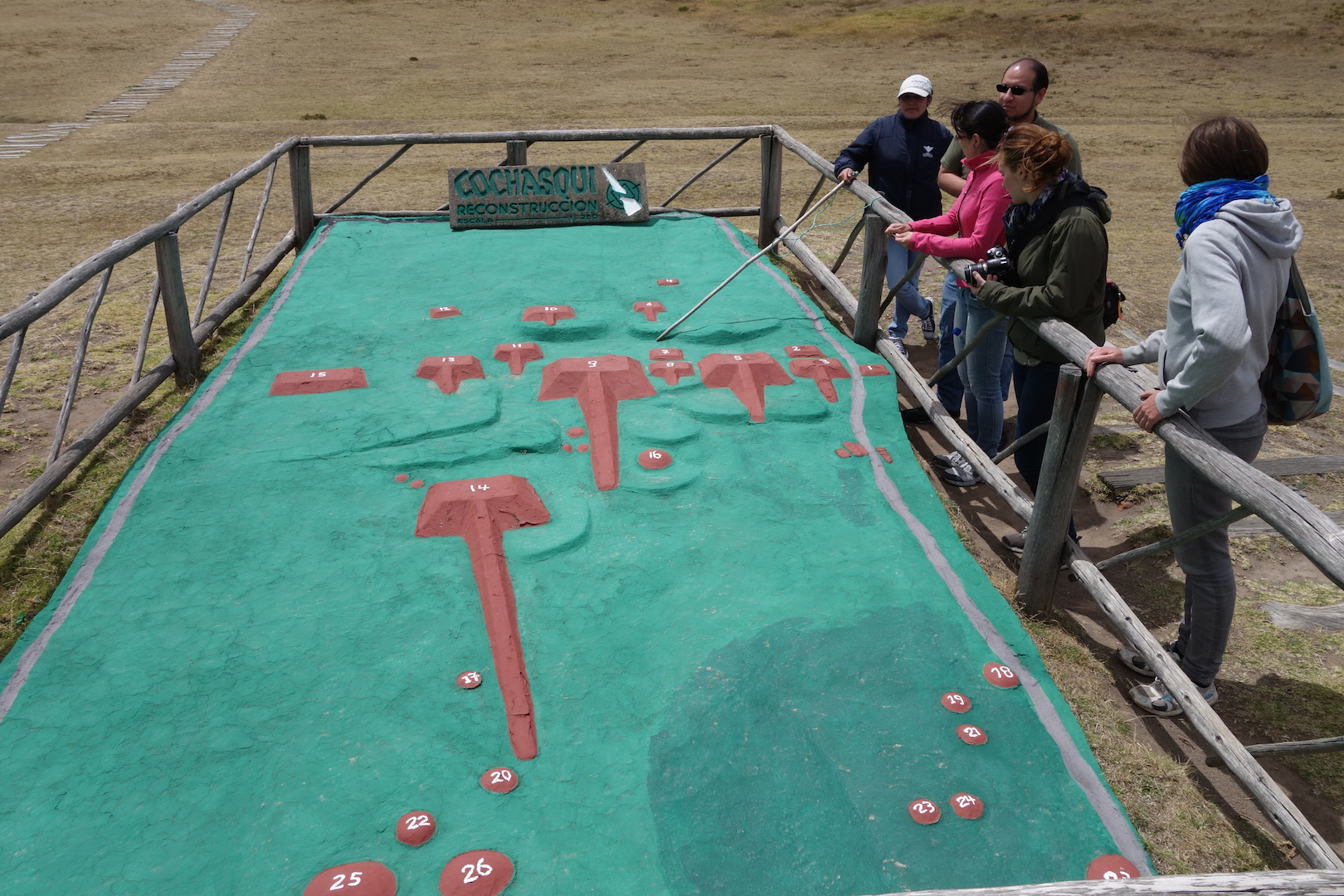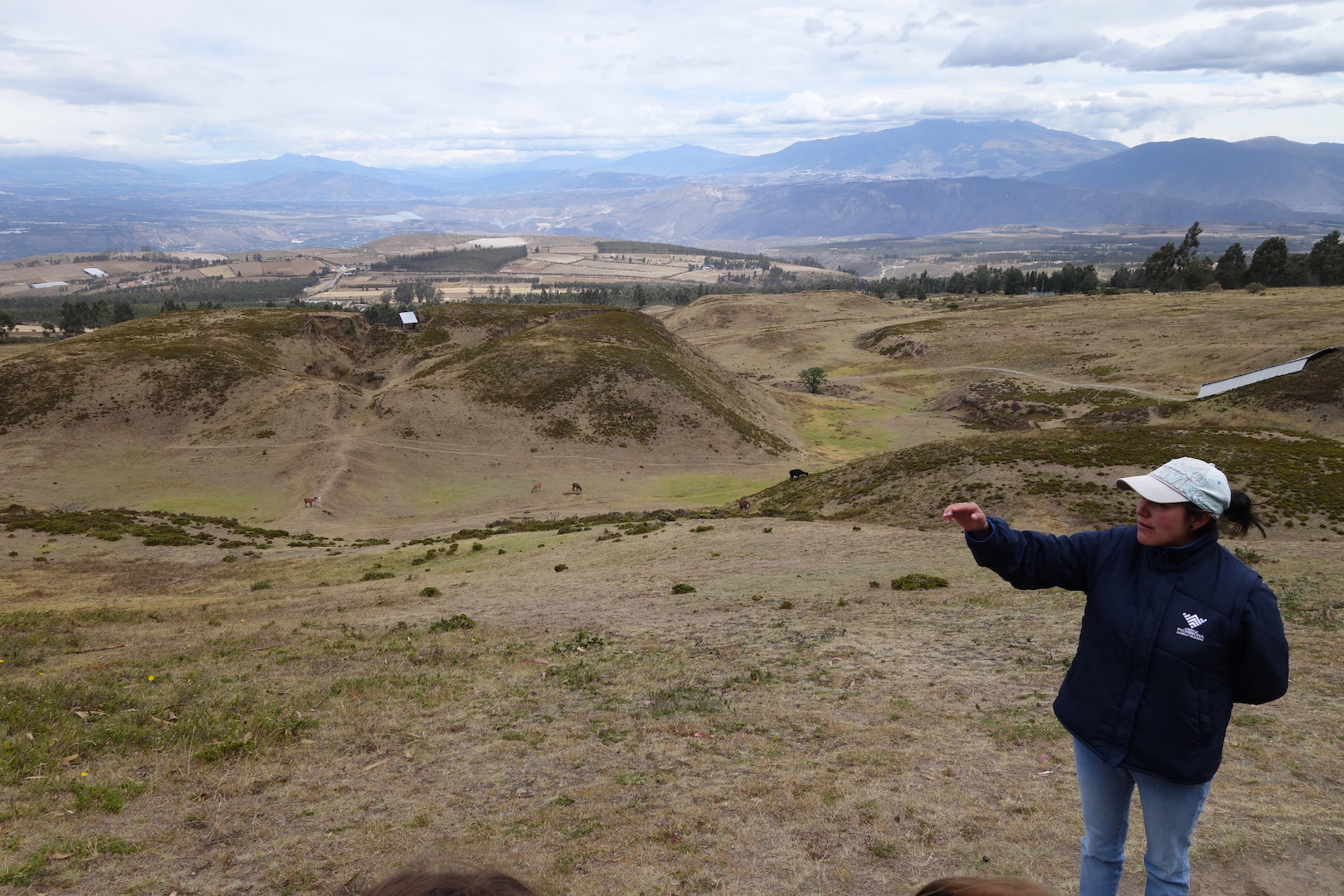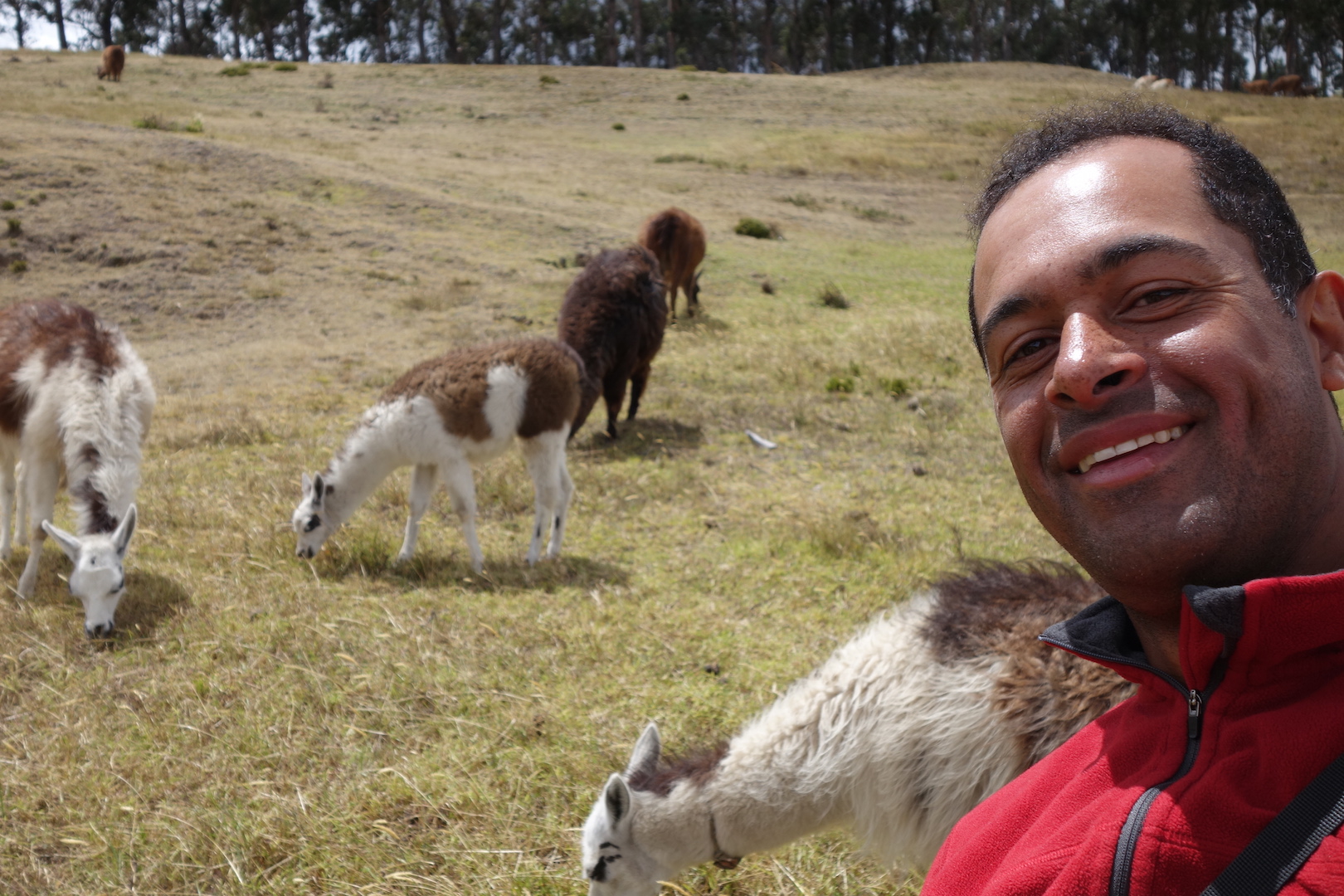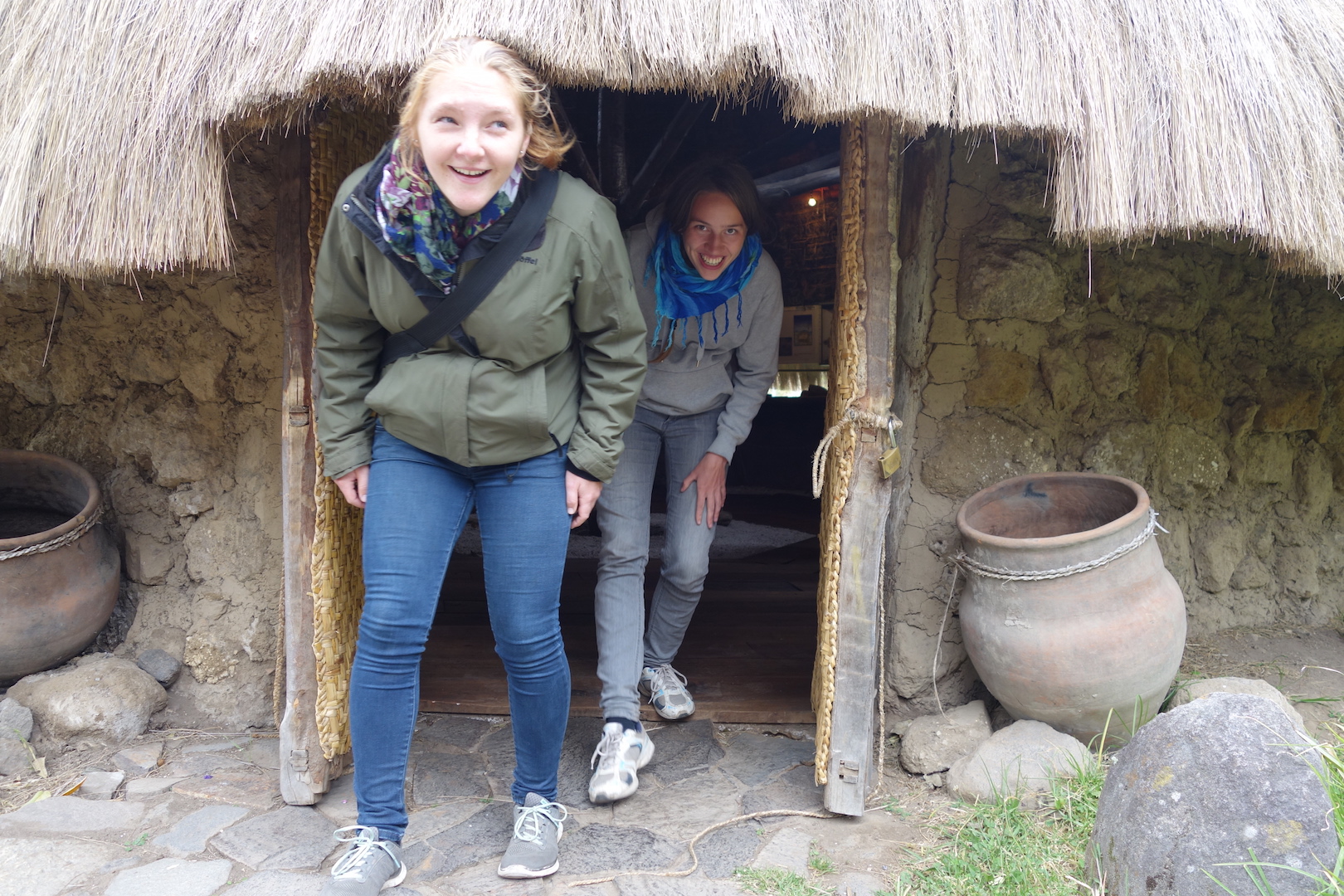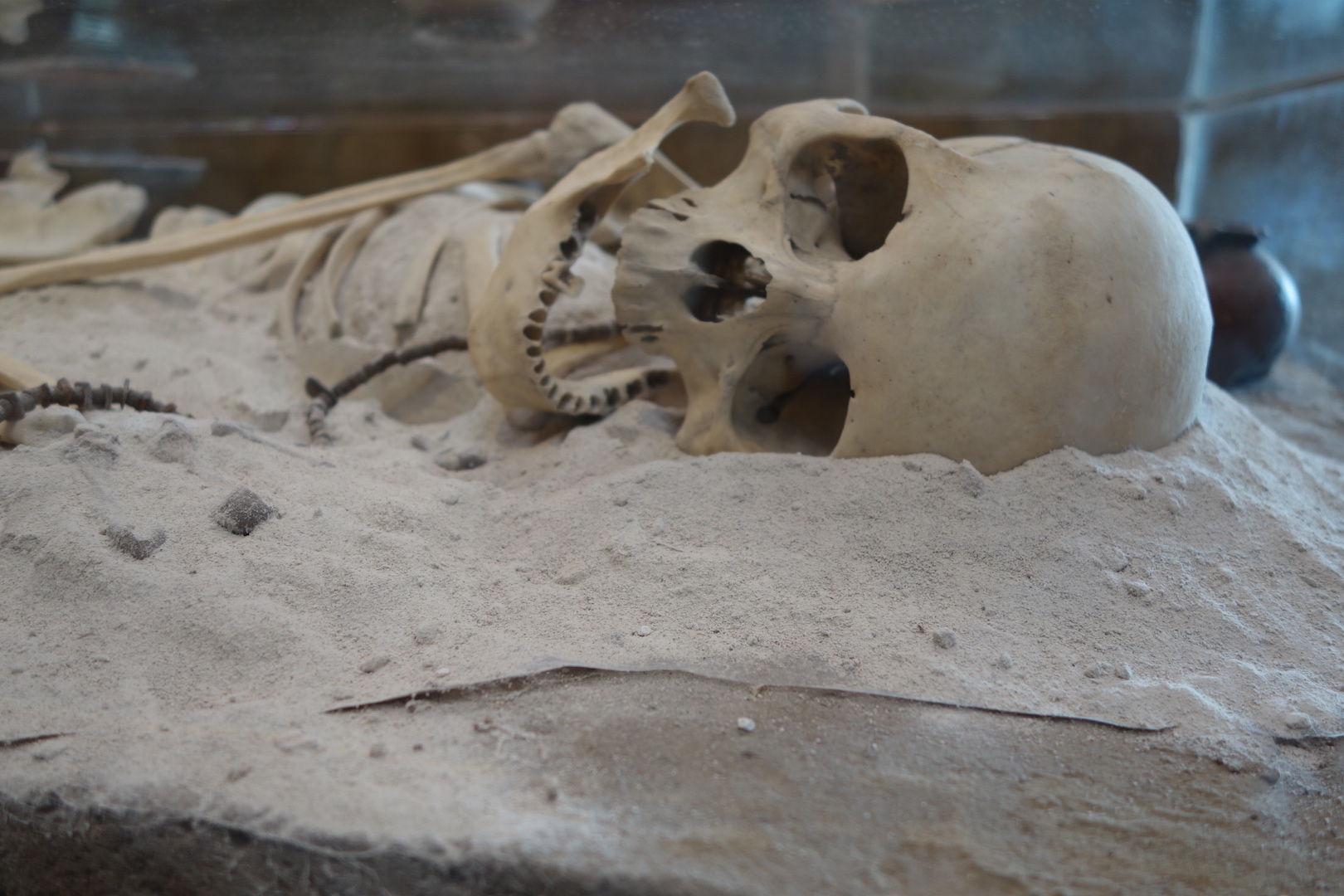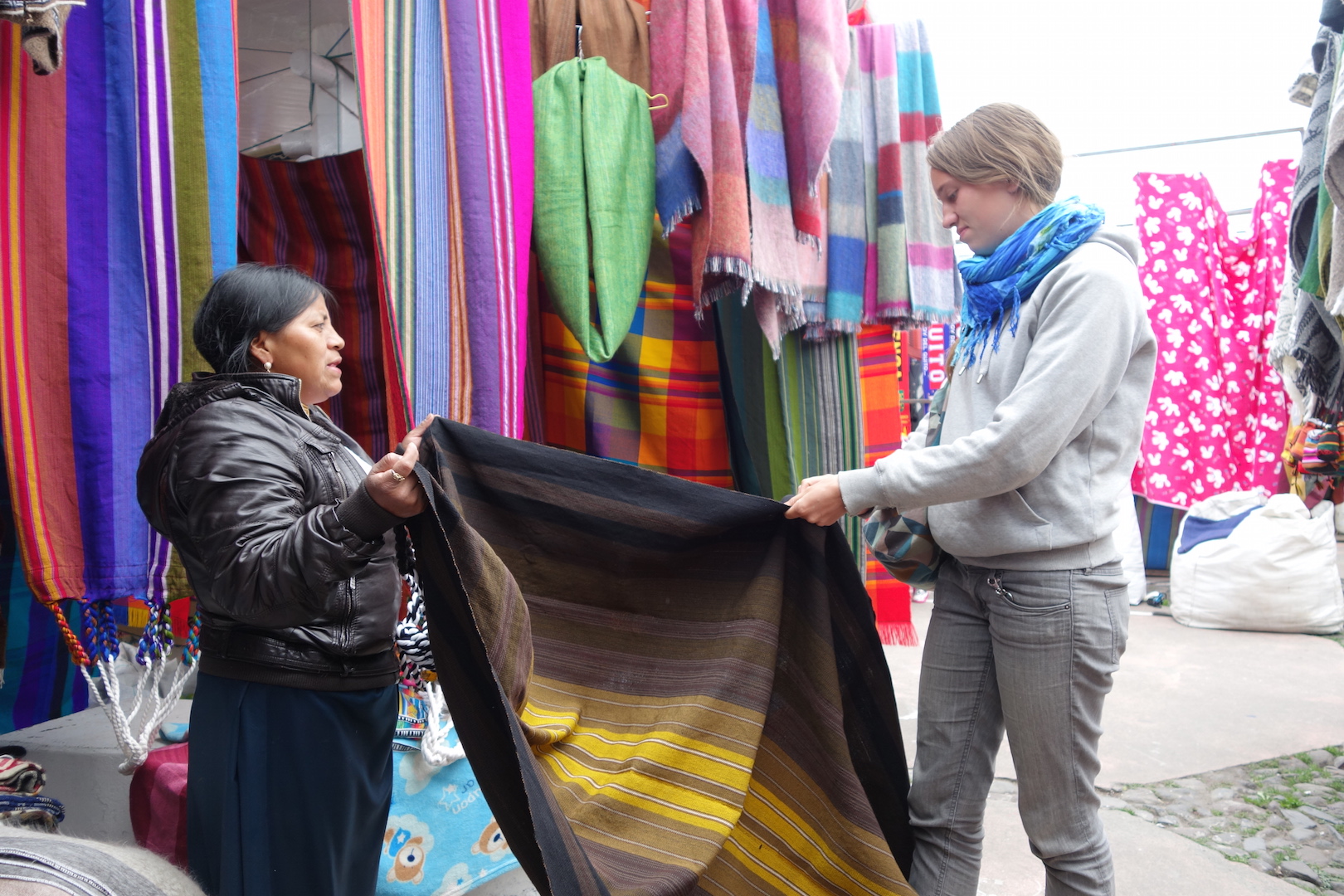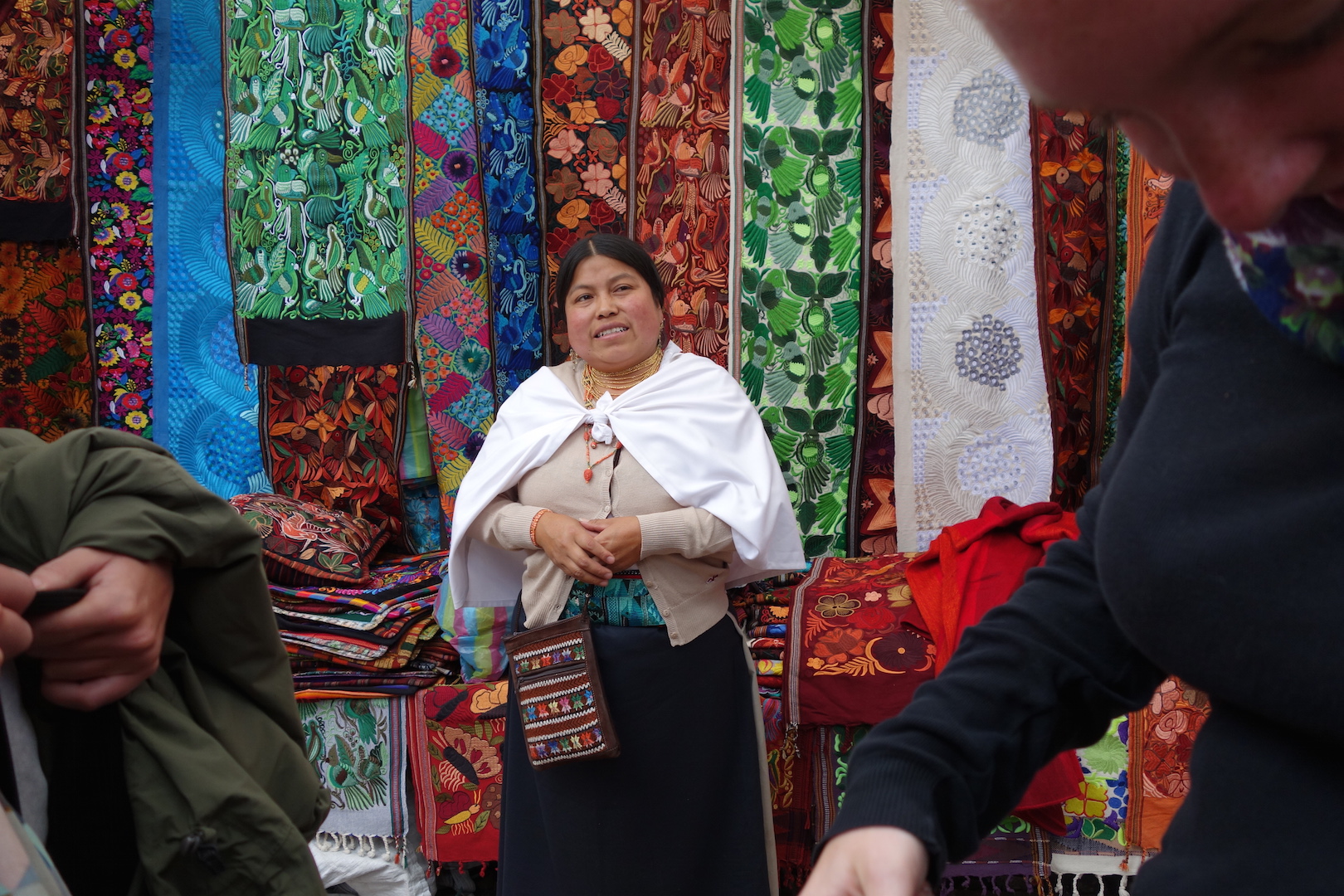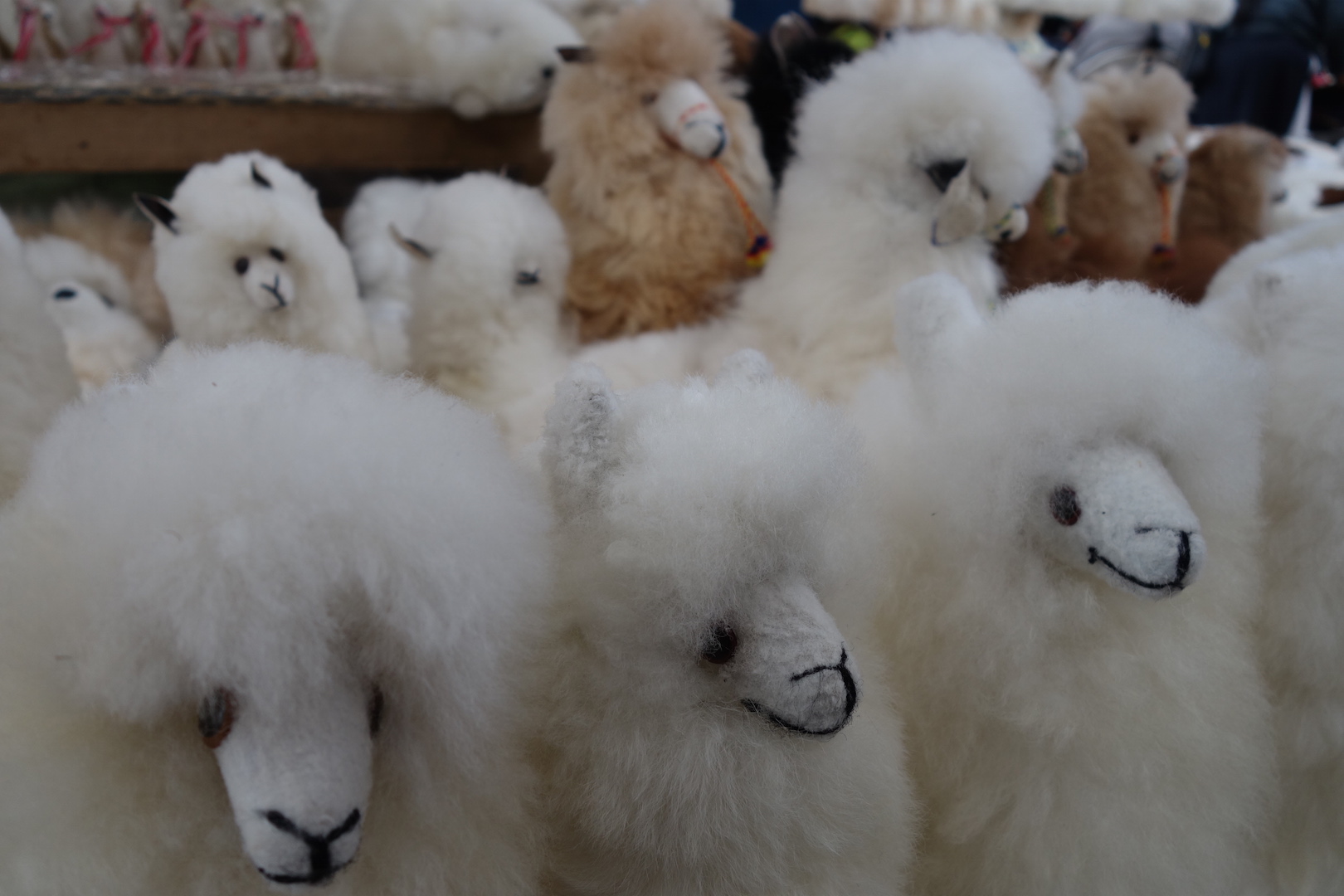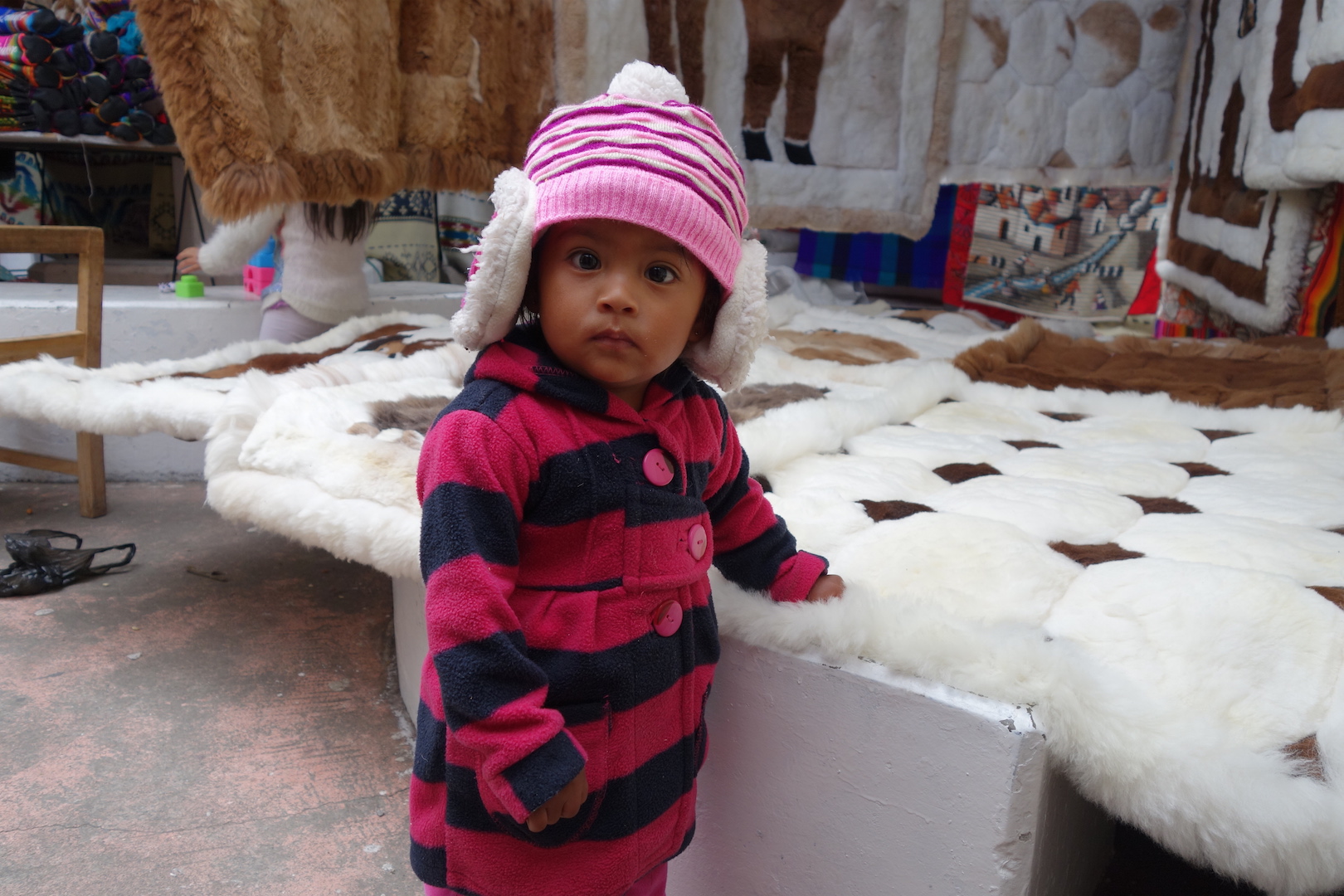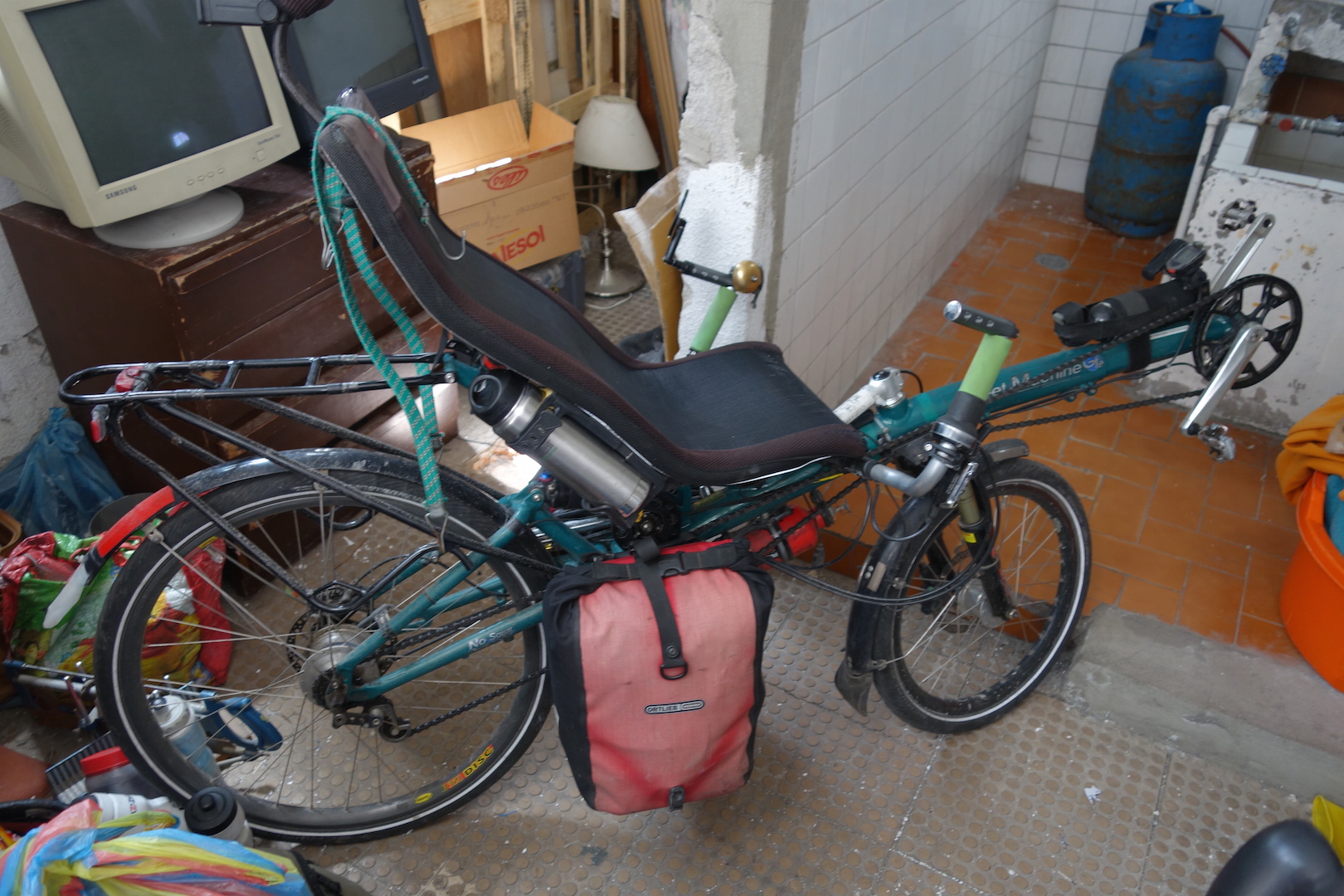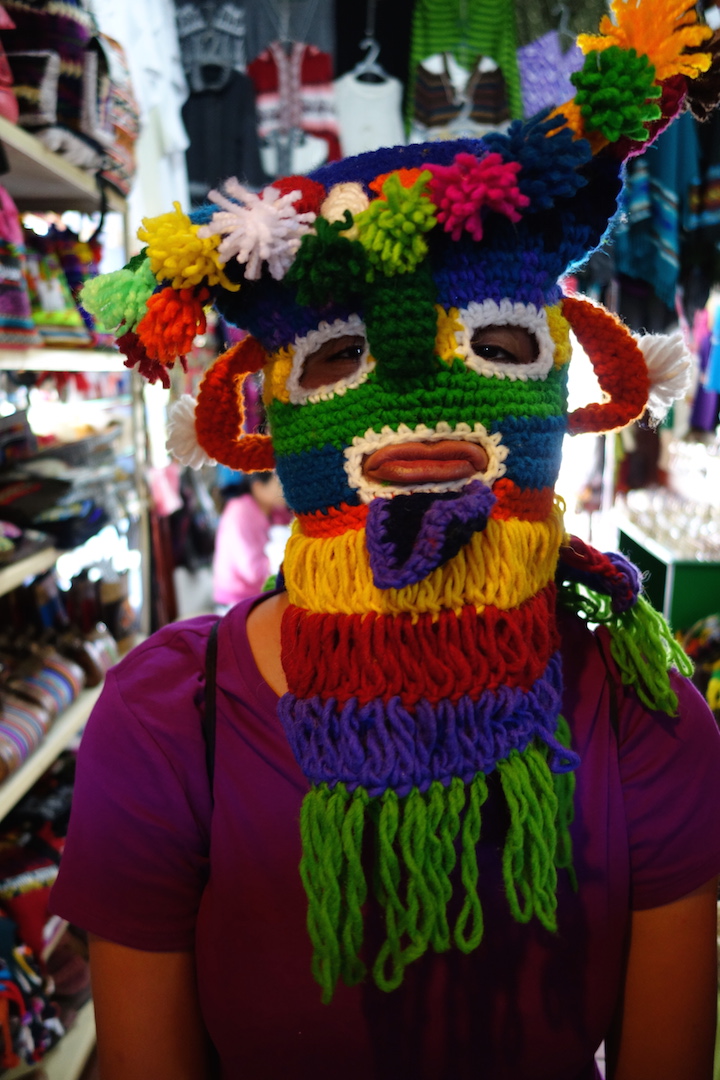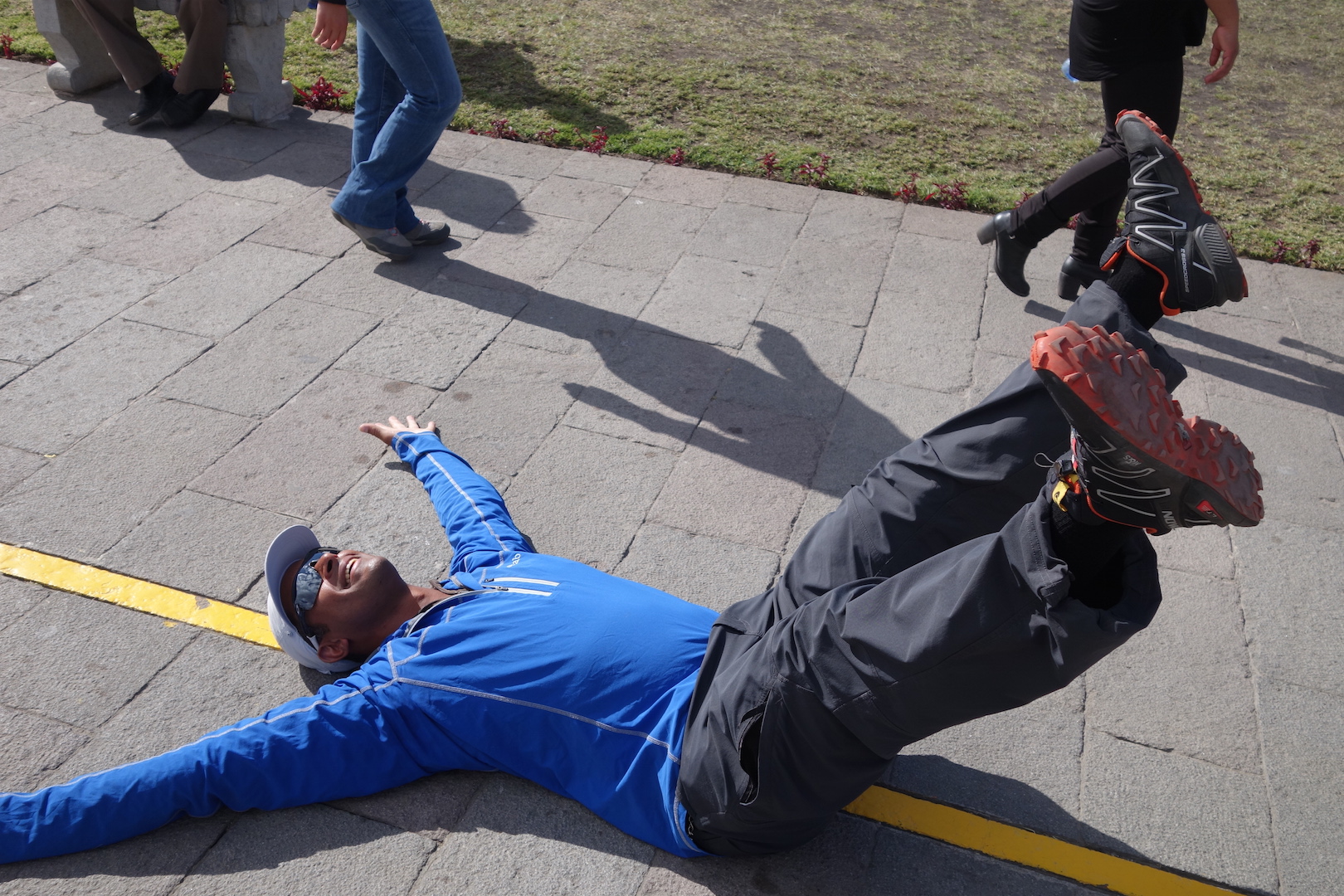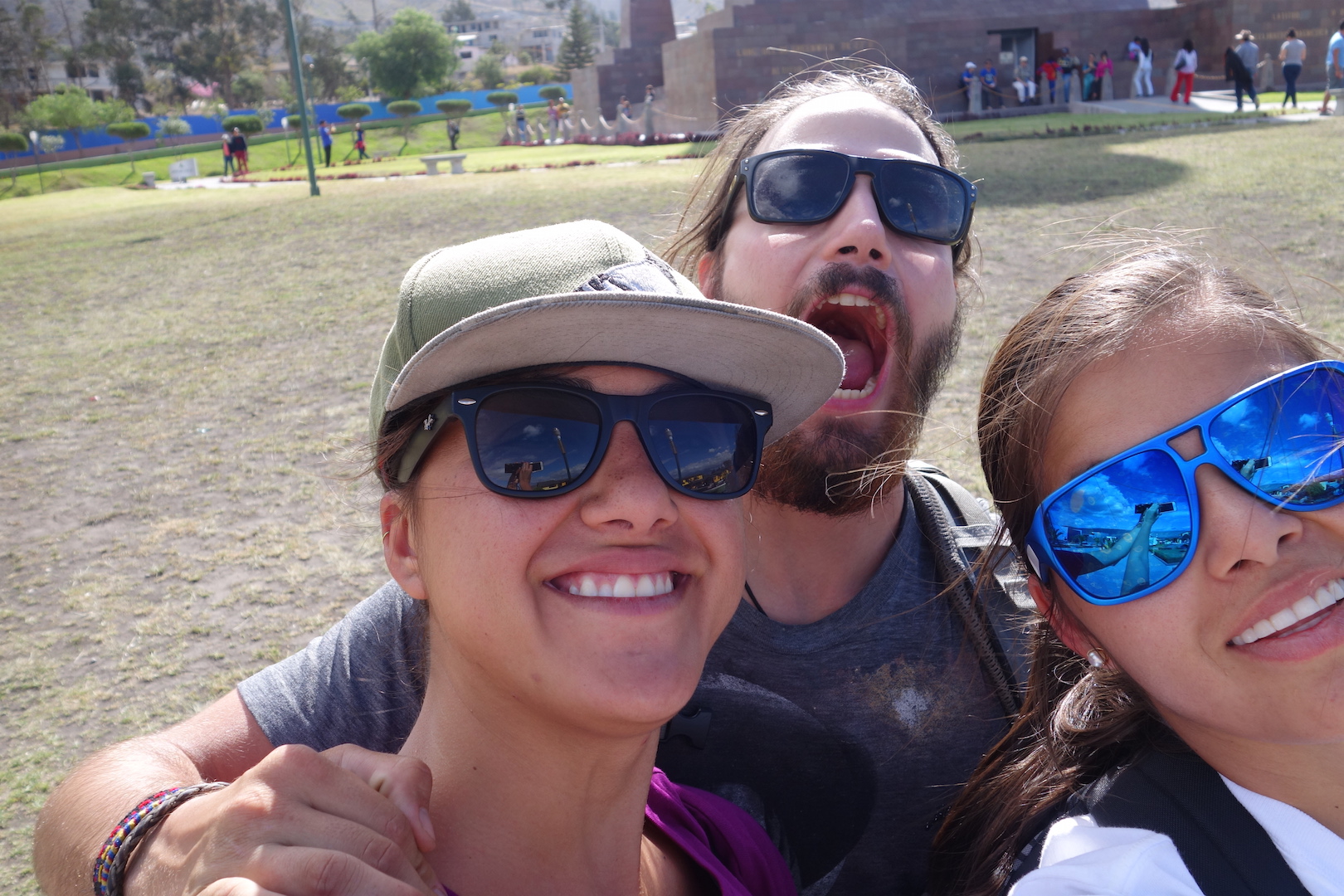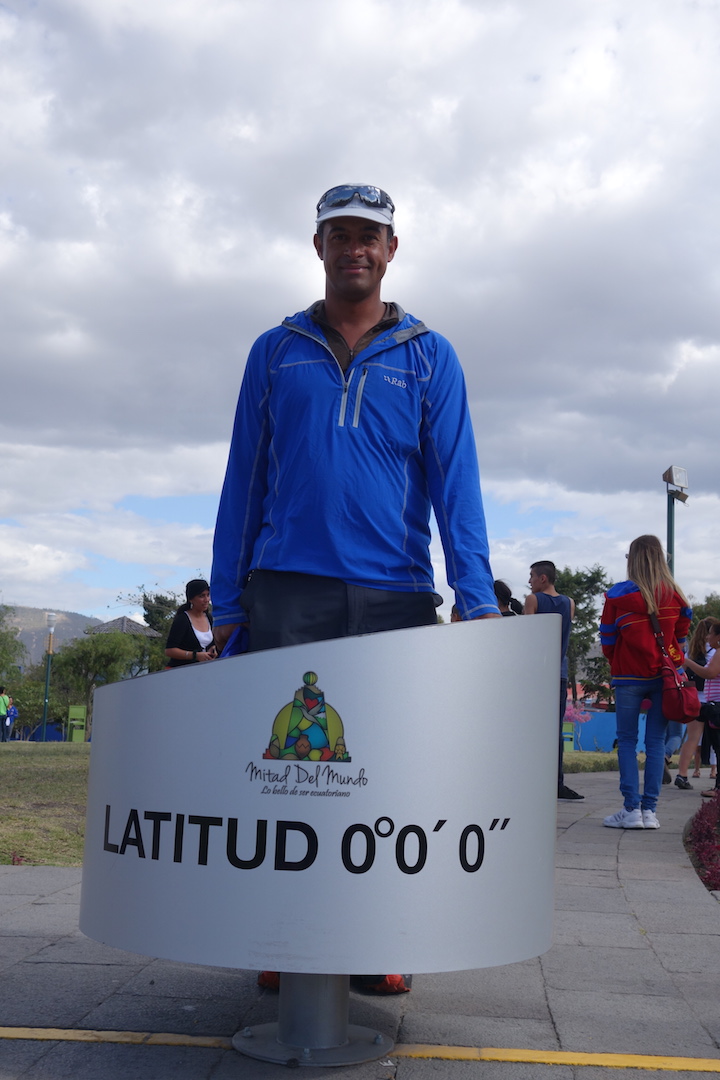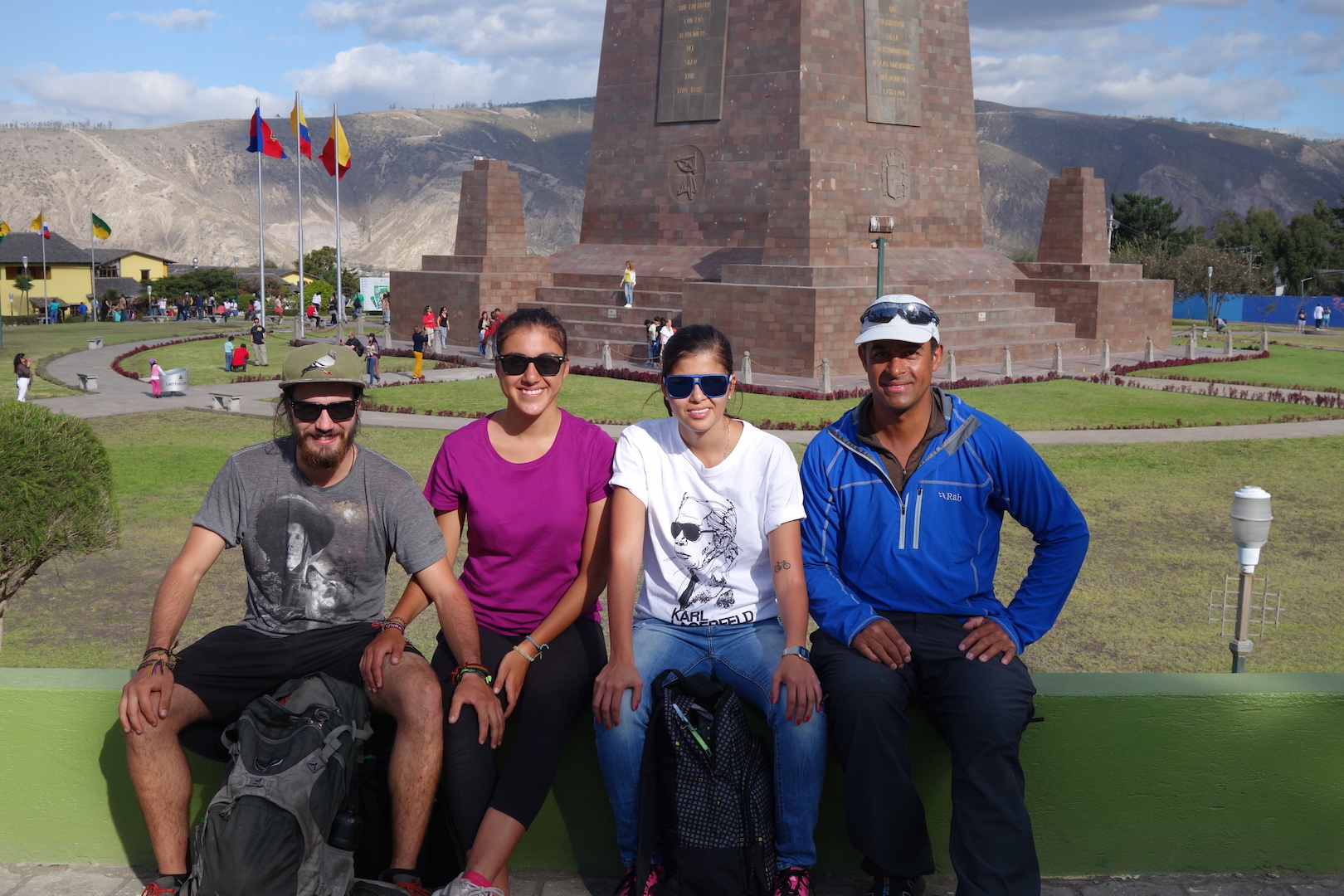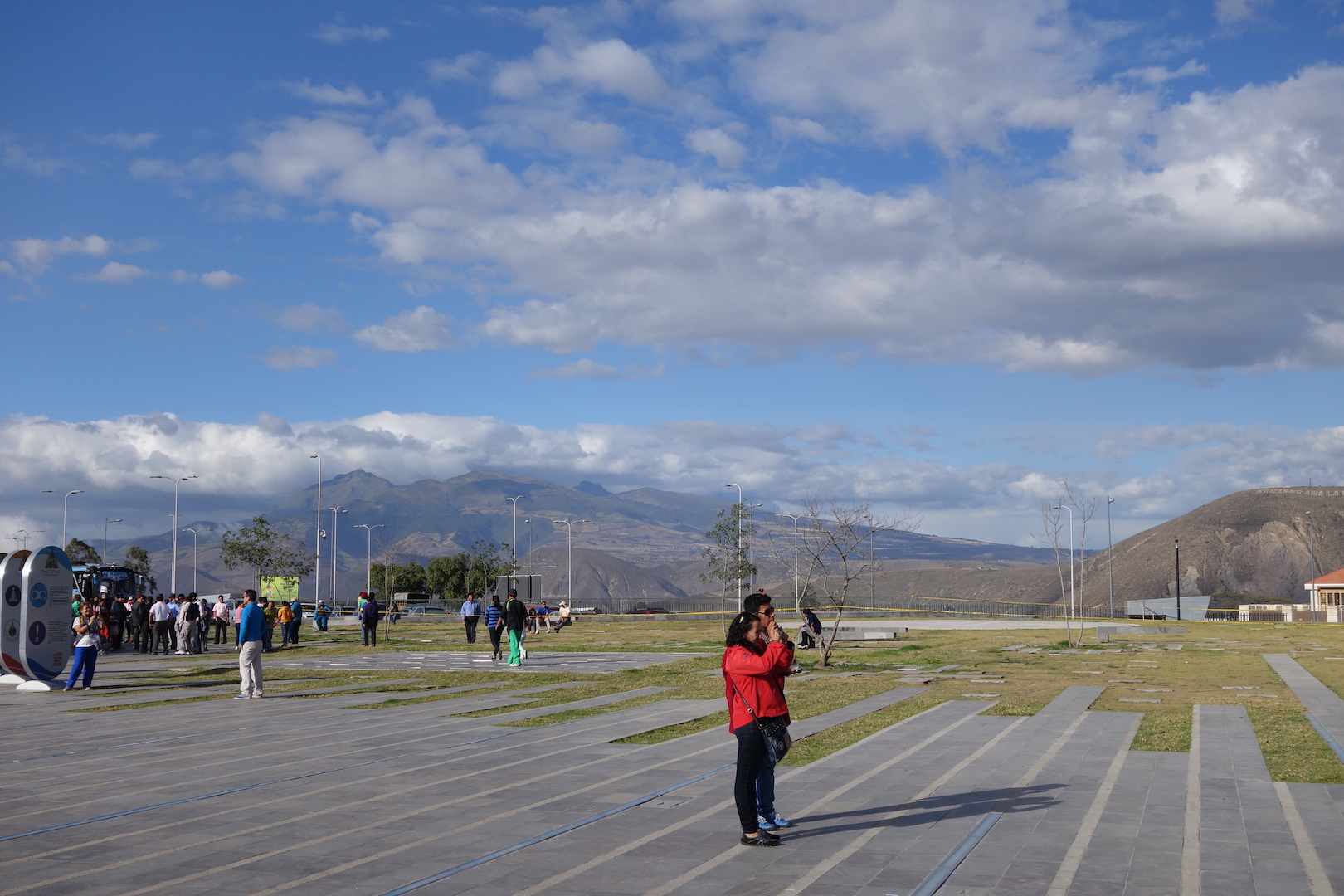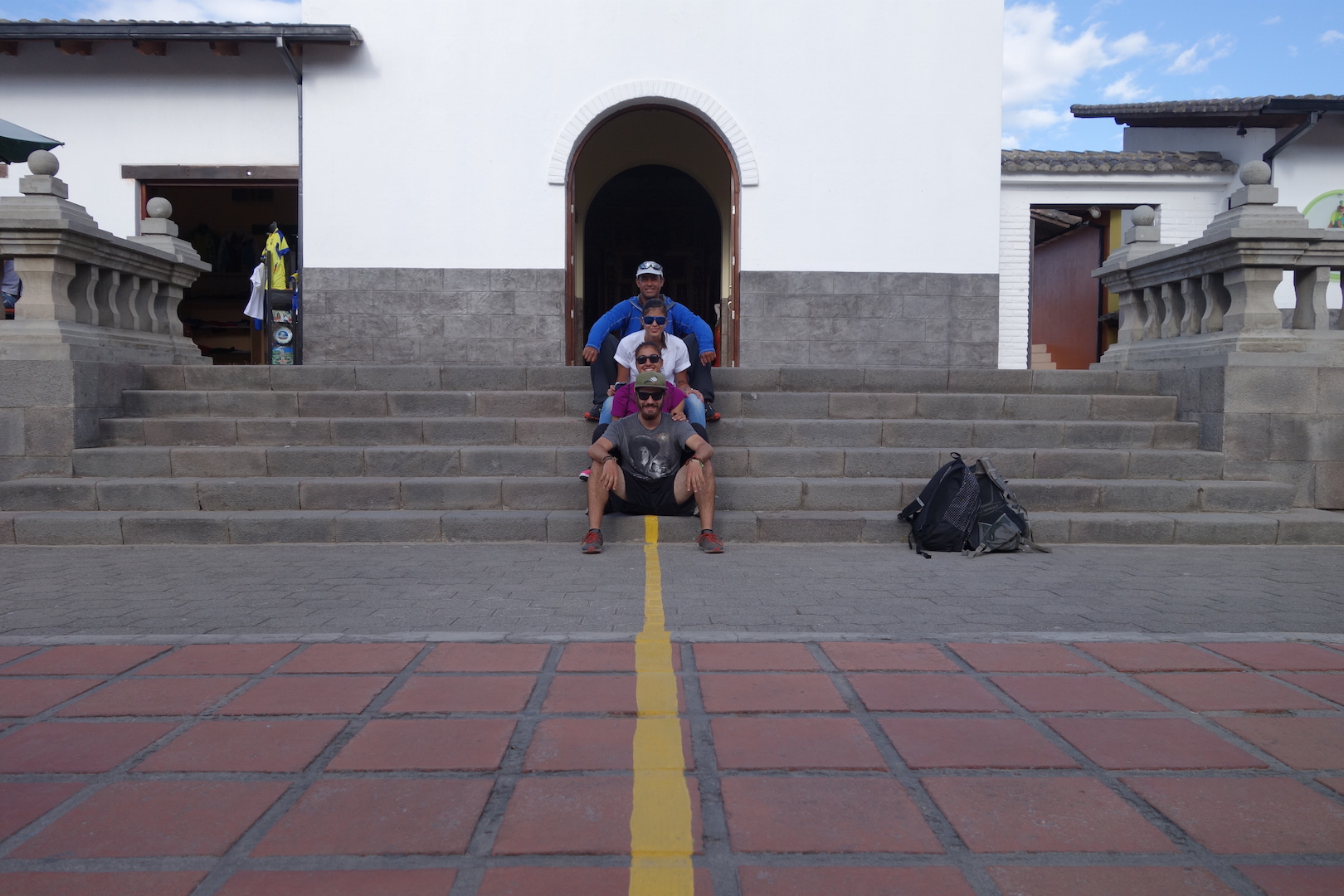0061: I Quito!
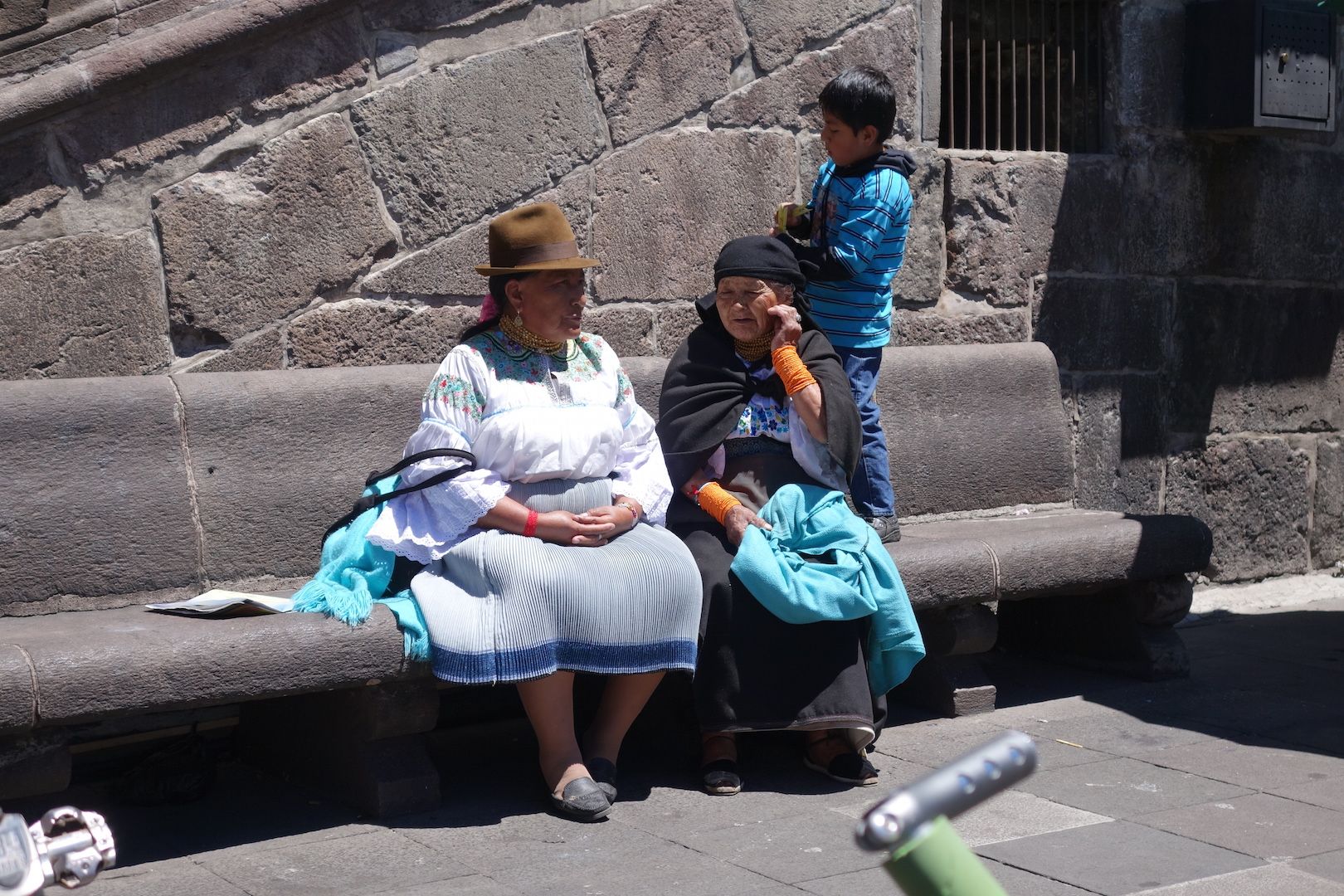
Ecuador seems to have a problem.
As I walk the streets of the capital Quito, It looks like many of the other Latin American cities I have passed through.
Modern, like Panama city. Scruffy like San Salvador and expensive like San José. The people here appear to have a good life. And while it is evident there is both wealth and poverty, and the natural displacement and distinction between the rich and poor it is not as potent as I saw in Medellin.
The residents often drive big cars, the public transport systems function well, (but the staff don't know the routes). And beaten up vehicles and taxis that spew toxic black smoke into the air. Many people walk round with face masks on.
The parks and gardens are large, clean and well presented yet at the same time there are indigenous teens and children wandering the streets looking for scraps and things to recycle in the bins and waste bags in the streets.
They don't appear to be homeless. Their clothes are reasonably well presented, clean, apart from rooting through the bins and relatively new.
The younger girls and women wear distinctive felt hats.
I was told told the single or unmarried women wear only the hat and headband where the married women carry a feather or other emblem in the headband to signify their status in society.
Many of the younger generation here wear clothing, hairstyles and shoes that is not dissimilar to the styles I have seen in other countries. New York, Toronto, Mexico city, and San José
There are the same Sassy cliques, the Emos, the Goths, the Nerds, the Footballers and the Dancers going to ballet or Zumba class.
All present here but with their unique Latin American customisations.
They seem to enjoy the privileges of city living that society brings.
The bars, clubs shopping malls, cinemas, health services and education systems are all open to them.
They have global 4G LTE internet access on their iPhone 6 plus, rent-a-bike schemes, McDonald's burgers, Nike trainers, Coca-cola and all the other trappings of modern living.
But something is not right and I have yet to pinpoint exactly what it is
I have noticed a high number of adolescents with cut wrists and scarred arms.
At first I noticed leather wrist bands. And looked at it as a local fashion. Then one or two bandaged wrists. Then many more teens and some young adults with recent or fading scars on the inside of the arms and wrists.
It doesn't seem to fall into a particular social group, but there is a higher number in the middle classes.
What is the problem?
Why do this to yourself?
The last time I saw this so distinctly was within the indigenous communities in central Canada.
But there, I learned that some of the problems stem from cultural and in family violence, alcoholism and drug abuse and a failure of the system to support a deprived community and challenged generation.
It doesn't seem the same here though but Ecuador has a problem.
While in Ibarra, I spoke with my host Anny about the diversity of peoples living in Ecuador and South America.
"Yes there are a lot of black people here. Most are from the days after slavery when they were given freedom and the opportunity to relocate.
Many came to Ecuador through the port of Salinas and settled in the agricultural regions there."
She continued.
"There is no real racism here. We all accept each other as Ecuadorian"
Wherever their ancestors originally came from and whatever their history. This is Ecuador, now"
Like most American countries, I have passed through the people are a fairly homogeneous mix of native indigenous, Spanish, Portuguese or other European and black African.
And they seem to live in relative harmony with none of the apparent social tensions that afflict the USA, for example.
Ecuador is among the most Catholic nations in Latin America.
An estimated 70-80% percent of the population identifies as Catholic and Pope Francis visited the country just a couple of weeks before my arrival. (I thought the banners and ticker tape were for me!)
Francis, himself a Latin American, born in Argentina was on his first visit to Spanish-speaking countries in Latin America since he became pope. Having previously visited Brazil.
Though his presence was welcomed, extremely popular and well attended,
he arrived in Ecuador at a time of political tension, which has become more acute as his visit as focused world attention on the country. For several weeks, protesters have been taking to the streets in some of the largest demonstrations against the government.
However, I have spent the past week walking the streets of Quito and seen little evidence of unrest or dissatisfaction. It all seems 'normal' to me.
There is a very low key police presence and no military on the streets as was boldly evident in Colombia. But there are a lot of security guards. More than El Salvador I think?
And people still enjoy their sports and outdoor activities.
Francis also comes to Ecuador shortly after presenting a speech on environmental change. In it he said world should take prompt action to halt potentially devastating climate and ecological change, which were partly caused by economic development and excessive consumerism.
Walking the city, it seems the template the USA and Europe has given the world is firmly in place here too and now people are becoming accustomed to the "Western" way of living and the advantages this affords them will be difficult to change.
The country also has the highest teen pregnancy rate in South America: From 2004 until 2011 the rate of teenage pregnancy grew by 74 percent.
Mainly in the eastern Amazon communities apparently.
Like many other places abortion is a contentious issue. Governmental changes with the current President, are siding on Pro-life and with the new found bond with the Catholic church look to make life harder for those wanting informed choice.
An illegal abortion in Ecuador can lead to a five-year prison sentence for the woman seeking an abortion, and a two-to-five-year sentence for her doctor.
Recent efforts to change the law by campaigners in the end had little impact on current policy.
The only change that lawmakers made was to reword an exemption category in the abortion law from "idiot" to "mentally disabled," referring to rape victims permitted a legal abortion.
But there seems to be little emphasis, on the surface at least, towards education and support for those young mothers (and fathers!) The "Let's keep it in the family" attitude seems to dominate and I have yet to see evidence otherwise.
I arrived in Quito late in the evening.
There is a very long and steep climb into the city along busy main roads.
I had arrange to stay with Diego who promptly sent me instructions to his home. However my phone had trouble accepting the huge 65mb file with his address on it!
Why so big, I wondered? YouTube videos are often smaller than that!
I asked for the address in a simple text message, but his work hours and my tiredness meant I had already booked a not so cheap hotel and was half asleep by the time I received the message. I was completely exhausted, a little annoyed and hungry.
The following day I managed to find my way to his house and settled in.
Another Canadian Cyclist, Jarek, was there.
A familiar face.
We had met before and cycled together briefly from Cali with Max and Dev.
He had arrived in Quito some 10 days before full of cold and flu and spent his time recuperating at Diegos' flat.
His woes continued though, as through his illness he managed to lose his credit cards and was now stranded till he could be rescued from home.
Still, we chatted about his adventures and discussed the route ahead.
A few days later, he managed to organise himself and set off for the Amazon.
I will likely see him further down the road.
Diego is a Lawyer and another keen warmshowers host and very likeable and attentive.
He is keen to do his own tour in the future and was bombarding me with questions from the off.
We spent a lot of time talking, then the following Sunday rode with his son, niece and nephew through the centre of Quito on the weekly Ciclopaseo attended by thousands of local residents.
I had also arranged for a parcel to be delivered to Quito.
My red winter jacket and a warmer sleeping bag from home.
Quito is already at 2800m and a cool breeze runs almost continually. Night temperatures are a dry 5-8C and day can go over 20C in the day and still feel cool.
As I travel further south and climb higher, I am told it will get colder. Particularly in southern Peru and Bolivia.
My current sleeping bag is a $15 special from a camping store clear out. It works well enough in summer conditions. But has let me down on several occasions when in the high mountains of Mexico and Guatemala. I'm pretty certain it will not work in the Andes proper!
My problem here is that Ecuador customs have decided to hold on to it for some reason. And I cannot get a delivery date from UPS. So I am stuck.
Before I arrived I had received some messages from Paula and Elena.
Two German students I met back in San Jose. We shared a meal and couchsurfing host Alejandro, just for two nights and they continued the following day to Uruguay and southern, south America.
We kept in touch and they had sent me several email updates as to their location.
We arranged to meet as by chance, were also in Quito having since travelled north through Peru, Bolivia and Chile.
I will admit though until I saw a photo I was thinking about a completely different couple!
In San Jose, I later stayed with Rolando and went walking with two of his friends one of whom was also called Paula and had German history.
And I was thinking about this pair.
Not the first pair.
Oops!
I didn't tell the girls through embarrassment (although they just found out if they are reading this! Es tut mir leid!)
So, in previous discussions by email they mentioned certain points that didn't seem to add up as I got quite confused thinking about different people and events.
I suppose it doesn't matter in many respects but it was nice to meet up again, once my head had cleared!
They suggested we visit Cochasqui.
An archaeological dig north of Quito which gave an insight about the original indigenous populations of the area.
So we jumped on a bus and 1 hour later jumped off again!
As soon as the bus pulled away, I realised I left my expensive waterproof jacket on board and the bus was now in the distance, gearbox grinding and trailing thick black smoke into the wind!
A few expletives also floated away on the stiff breeze.
This is the first time I have lost something of significant value and importance on this trip!
The Archaeological dig was interesting and informative, but not all that exciting. But for $3 was worth the 1 hour hitch hiking after the bus and climbing up to 3200m.
The views from the top were stunning and would have been perfect if the clouds had cleared and allowed us to see the Cotopaxi volcano at the southern end of the valley.
But the pyramids were covered in soil for preservation so essentially we walked through a field full of mounds of earth covered in Llama and Alpaca poop!
We managed to hitch a lift with two of the other participants on our tour, who kindly took us down the mountain and on the 40 minute drive to neighbouring Otavalo. To see its famous market.
Paula and Elena wanted to do some shopping for souvenirs and gifts as their time in the Americas will soon be over.
This city is famous in Ecuador and in the Americas for the high number of successful indigenous business men and women selling traditional products and artefacts and had a huge and popular market.
Finally, we tried the office in the bus station to see if anyone had handed in my jacket. It was immediately clear that it was not going to be found, as the staff didn't seem be in the slightest bit interested in my problem.
My next few days in Quito were spent servicing my bike and waiting for my package.
Fitting a new chain back to a Shimano XT as the last cheap one from Costa Rica has worn quite excessively. And it is cheaper to change the chain regularly than to change sprocket, chainring and other parts.
This new chain will, I hope, last till the end now.
Jarek and I had discussed the route ahead and I worked out approximate distances and times.
I estimate I will arrive in Ushuaia in February or March next year if I keep moving at the same pace.
I suddenly had an overwhelming feeling my journey was over, even though I still have approximately 12-15,000 more Km's to cycle and several more months to do it in.
But those thousands of kilometres will soon become hundreds then ten's then one.....
Then what....
Even though my package has not yet arrived, I have decided to move on south then across to the west coast. The Avenida del Sol is supposed to be beautiful and will take me from Manta to Guayaquil. Then into Peru.
I have had enough of Quito.
On the way though I want to visit Montecristi, and see the locals making the famous Panama hats from special reeds.
I will try to arrange to collect my jacket in Guayaquil when I arrive.
Besides, Quito is expensive. The US Dollar is used here like Panama and El Salvador before it. So the locals try to justify USA prices for half the product or service. (Not that the USA did a better job!)
As well as a jacket I had decided some time ago to buy a new hard drive. As the 1TB one I have is almost full of mainly photos and videos but also of laptop backups and miscellaneous software, music and videos I have collected along the way.
And I am glad I did.
3 days after purchase and making a copy of all my Photos and videos, the original failed.
No warning. No funny noises or smells.
My laptop can see it, but cannot read it!
This is the first failure of something important since I started.
However, I am not too concerned.
One of the first things I set up, before beginning my journey was an automatic backup system for my archives.
For every photos or video there is at least 6 copies.
- On my camera - the original. Then...
- To my Laptop, which then get copied automatically to...
- My hard drive
- And backup drive. Now onto #2 then...
- Also automatically to one of 5 cloud accounts (total 375GB) for free!
- In addition Flickr offer 1TB of full resolution photo back up for free
- And finally I have relatives making at least one copy of the photos from a link to the cloud account.
As additional security, I post home the original SD cards when full.
After making another copy on the hard drive which I erase once I know it has arrived safely.
Paranoid? Me?......
I don't get a chance to replace any of these photos, so belt and braces it is!
So the loss of the hard drive is annoying, but not massively critical as long as none of the other systems fail.
If I lose the camera or SD card or have no internet access, I lose perhaps the past 2-3 days of Photos but not the whole lot.
In theory!
Max and Devora finally arrived in Quito. Having taken a leisurely slow pace to the city to recover and also as Devoras sister was coming to visit for a few days.
Max is now fighting fit again and they both were as crazy as ever!
I think they may have rubbed off on me a little?!
We met up and visited the Mitad del mundo museum north of Quito.
before they took a bus into the Amazon jungle to spend a few night in the jungle at a lodge near the Peru border.
Had I not needed to buy a jacket, hard drive and a few other things I would have probably travelled with them but I don't have the spare cash now.
Given the size of it, I have no doubt I will see another part of the Amazon somewhere along the road. And maybe I will also find out what is upsetting the kids?
